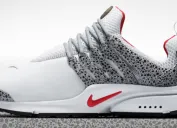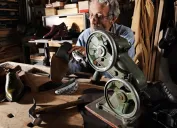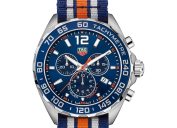The Most Popular Women's Shoe The Year You Were Born
From ballet flats to jelly sandals, we've seen it all in the past 60 years.
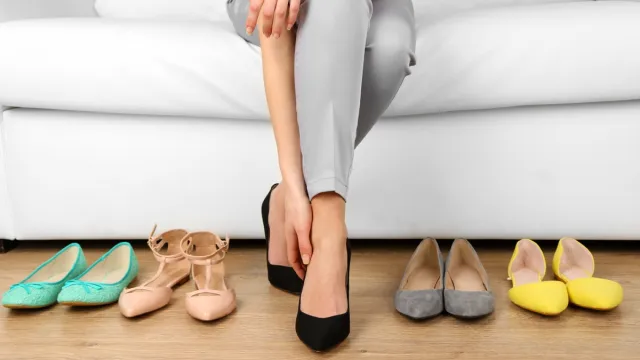
You're never fully dressed without some fashionable footwear. But the definition of stylish shoes has certainly varied over the years. From platforms to stilettos, the past six decades have seen shoe trends come, go, and circle back again. In order to find out what everyone was wearing while you were in baby booties, we dug into the footwear archives, going all the way back to 1940. So kick up your feet and take a look at the most popular shoes from the year you were born!
1940: Flats
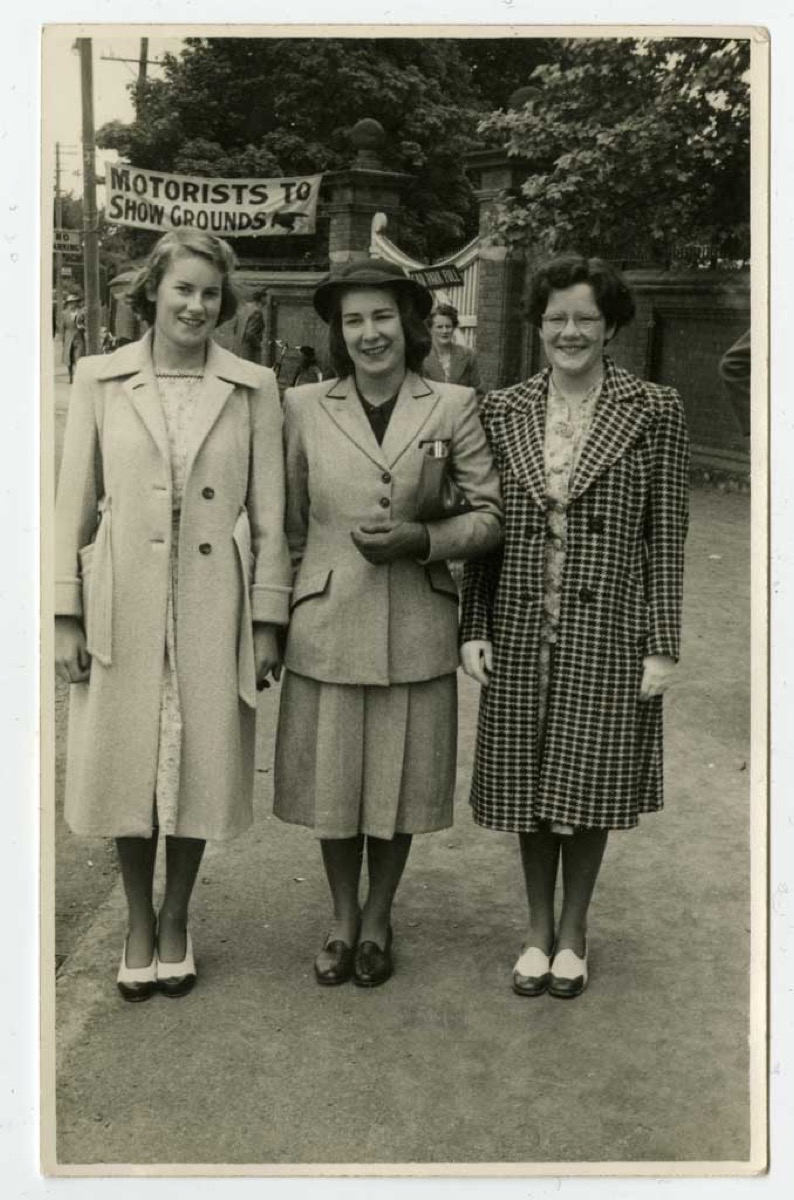
In the 1940s, the United States government placed restrictions on materials that would inevitably affect women's fashion, according to Vogue. As World War II raged on and sent many men overseas, women took jobs stateside. As a result, practical footwear—like closed-toed flats—became popular.
1941: Stacked Oxfords
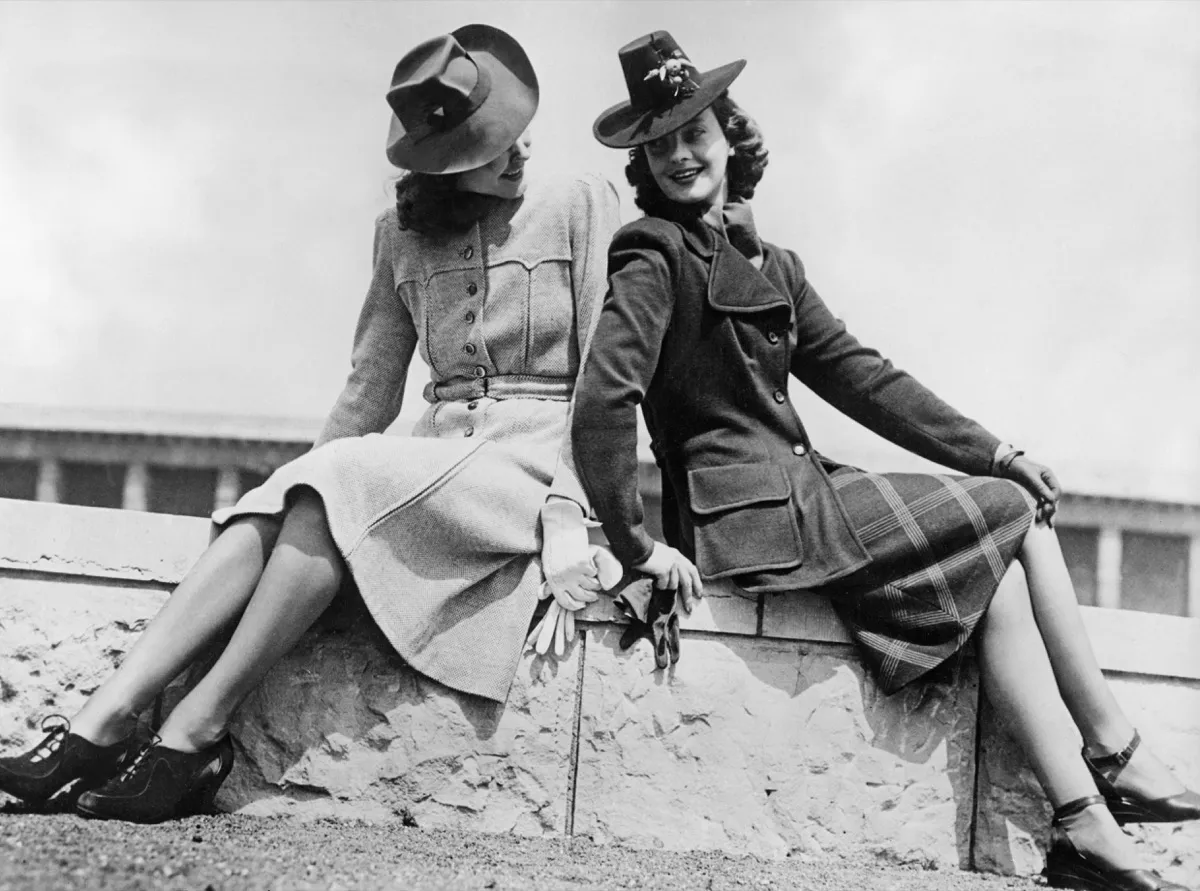
Eventually, women sought to pump up their practical footwear with a little heel. "For day wear, the stacked heel, lace-up Oxford was the shoe that could be worn with anything," according to Vintage Dancer. "They were sturdy, practical, long lasting, as well as comfortable to wear around the house, to run errands, and for working jobs. Everyone had at least one pair in brown or black."
1942: Block-Heel Sandals
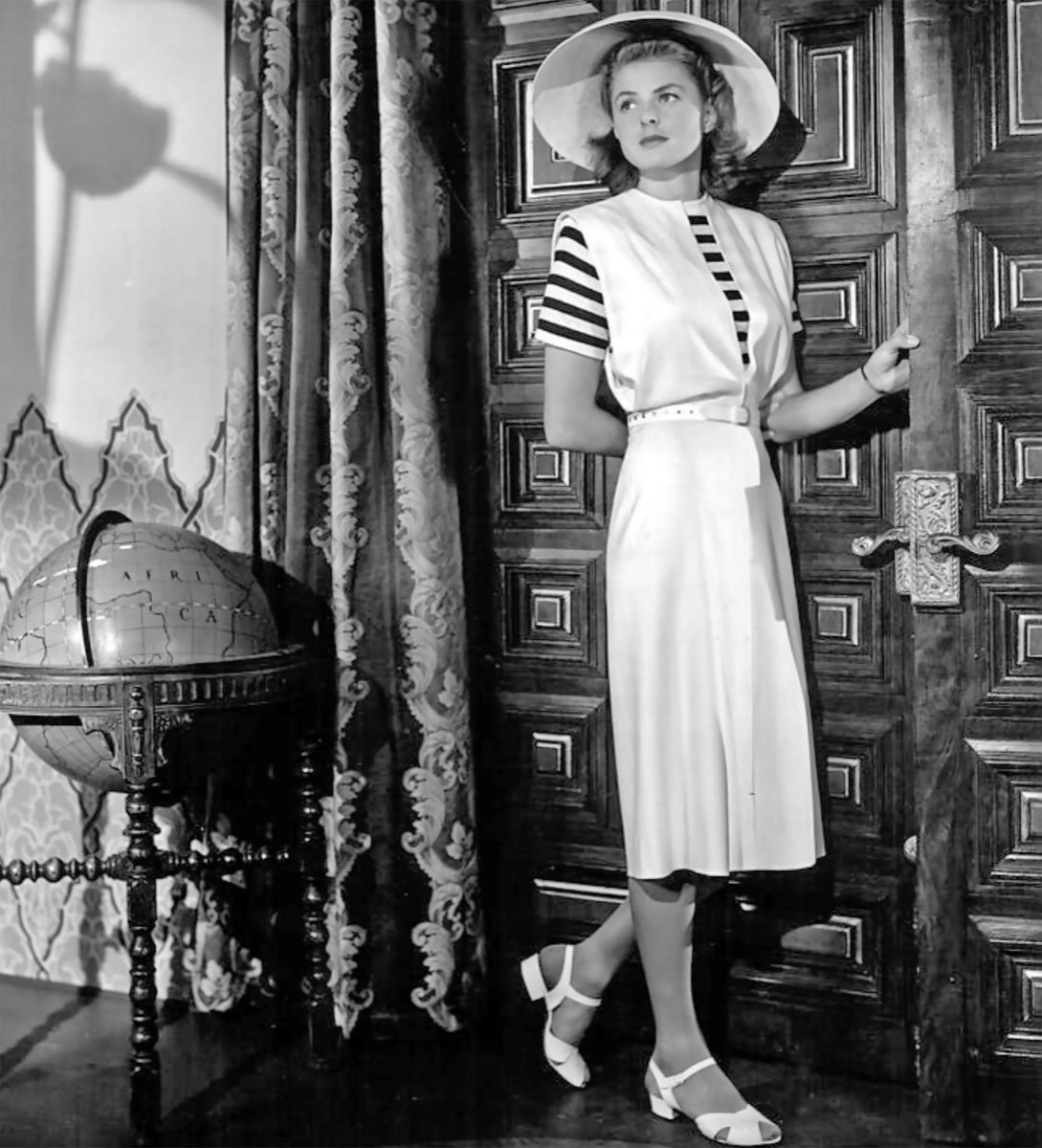
After actress Ingrid Bergman wore a block-heel sandal in the famous 1942 film Casablanca, they were the shoe of the year. They featured ankle straps and a peep toe, two popular styles from the '40s.
1943: Strappy Heels
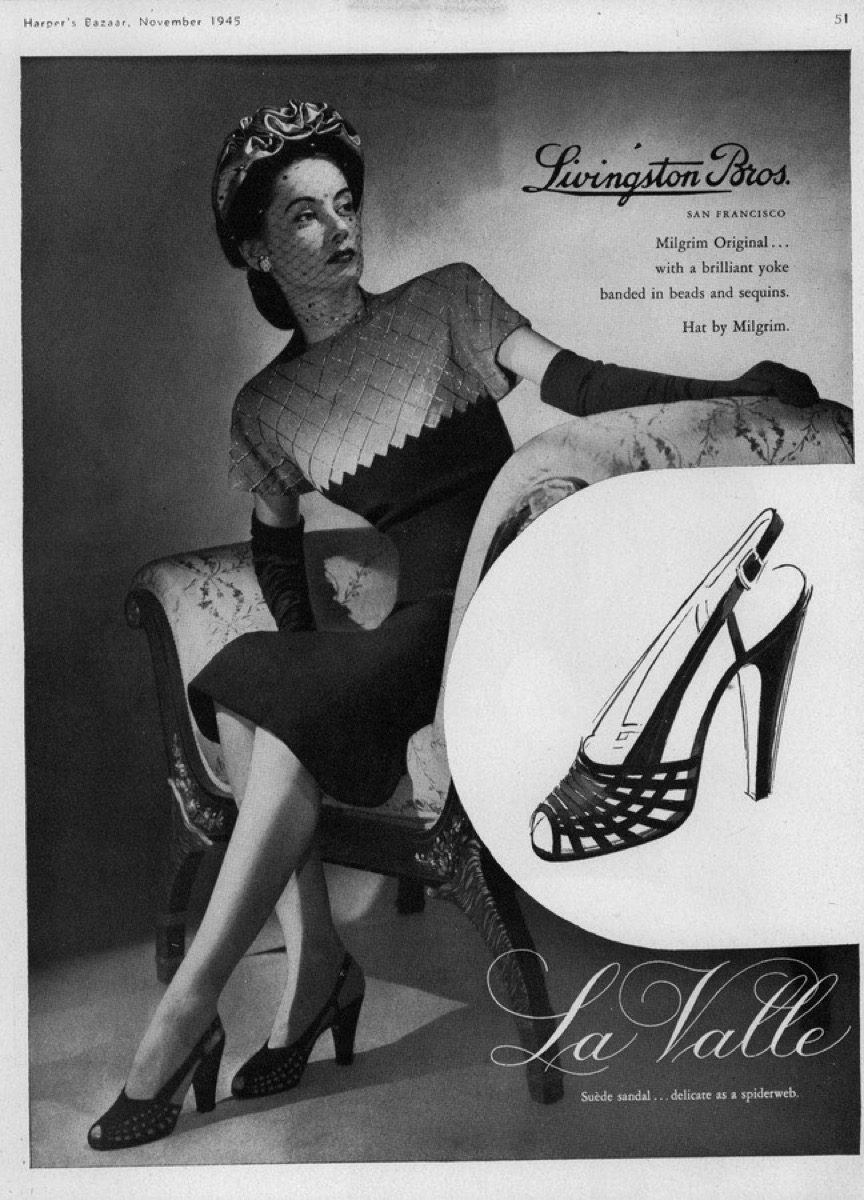
Image via Flickr/Kristine
The following year, sexy black heels with even more straps and revealing cut-outs were all the rage, according to Harper's Bazaar. Slowly but surely, footwear was getting sexier.
1944: Espadrilles
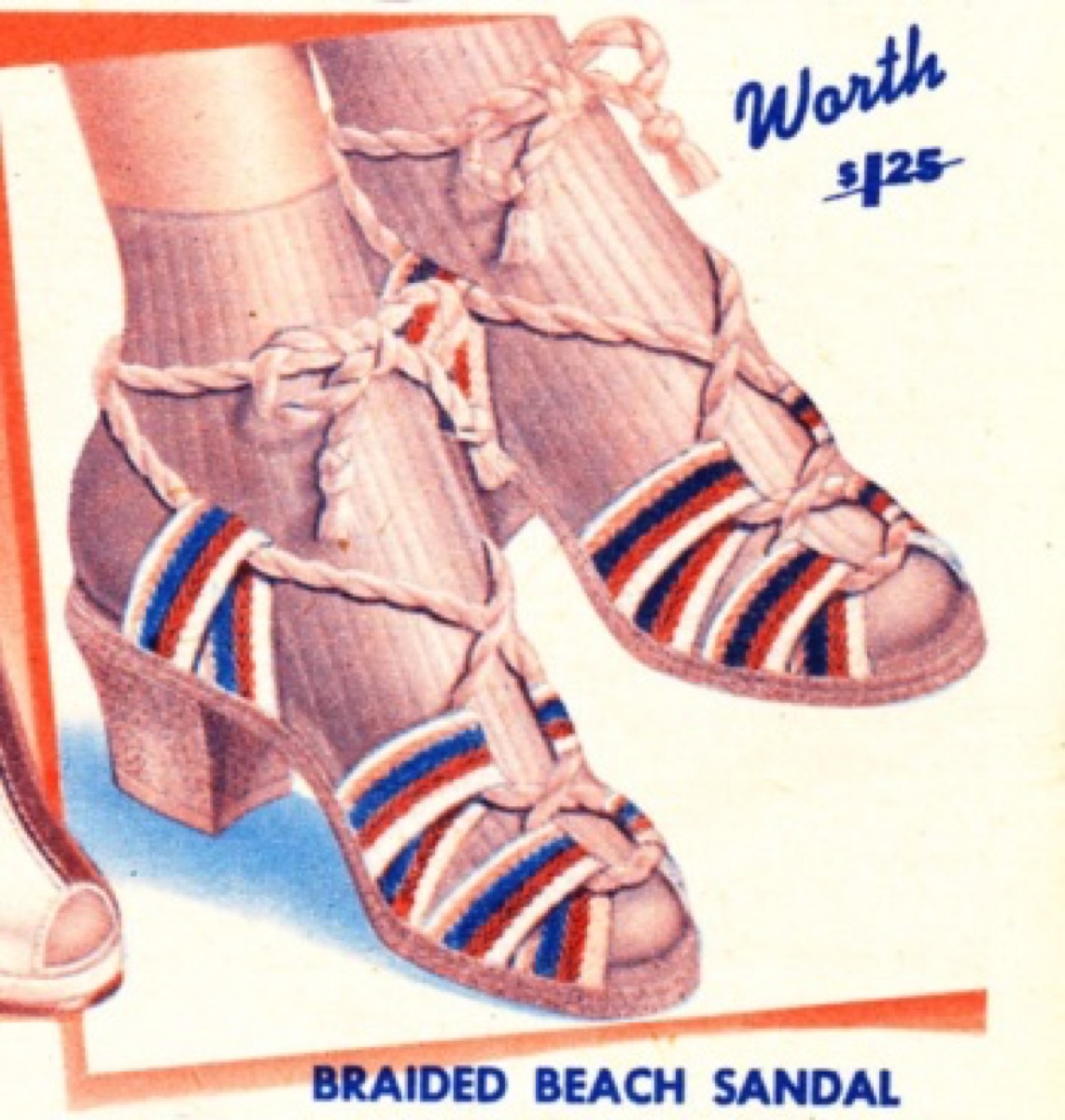
As you can see from this 1944 advertisement, braided espadrilles had come into fashion by the middle of the 1940s. These were tied at the ankle and featured a peep-toe detail.
And, as the ad demonstrates, it wasn't uncommon to sport this beachy style with socks, too.
1945: Wedgies
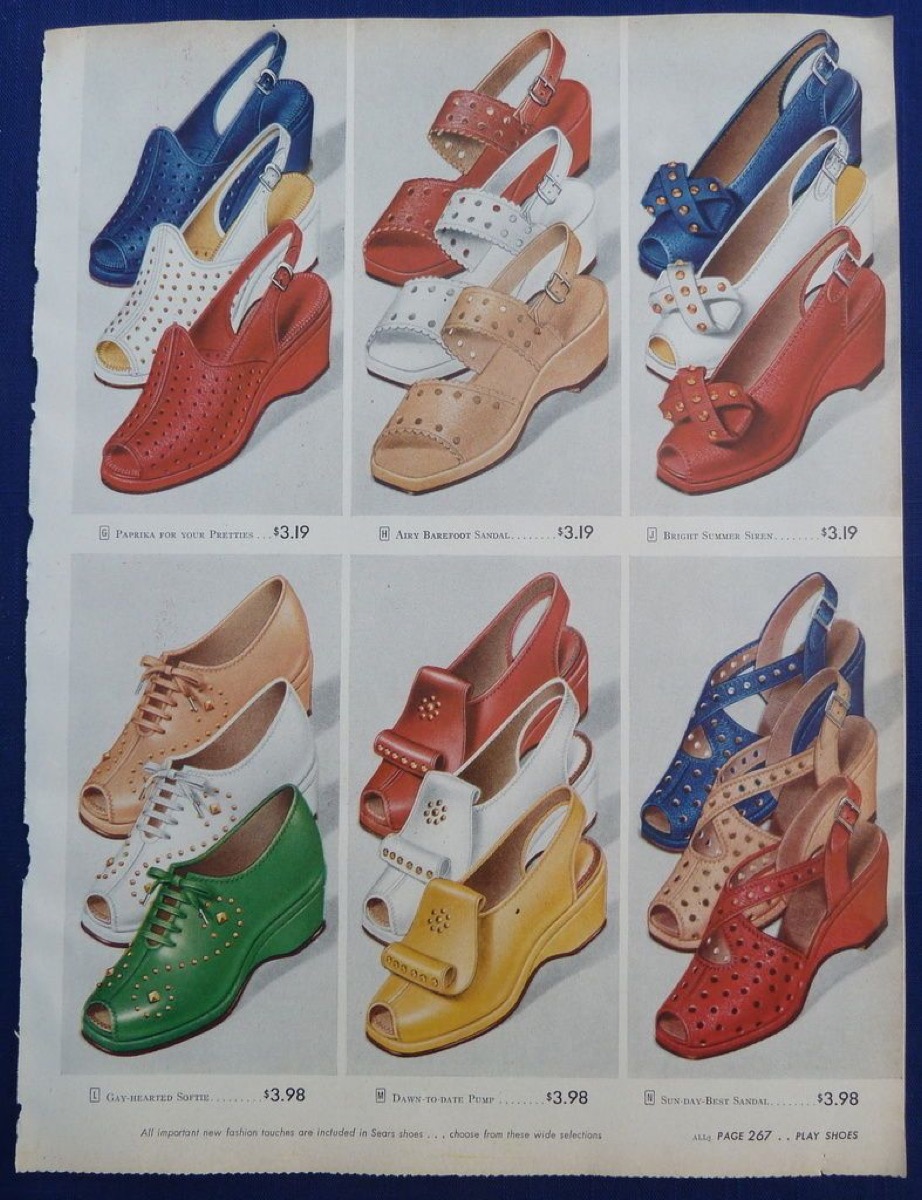
"The most iconic of all 1940s shoes must be the wedge or wedgie shoe," Vintage Dancer explains. "The thick sole with raised heel was certainly sturdy yet also sexy since it raised the heel and shaped a woman's leg nicely."
1946: Ruffle Pumps
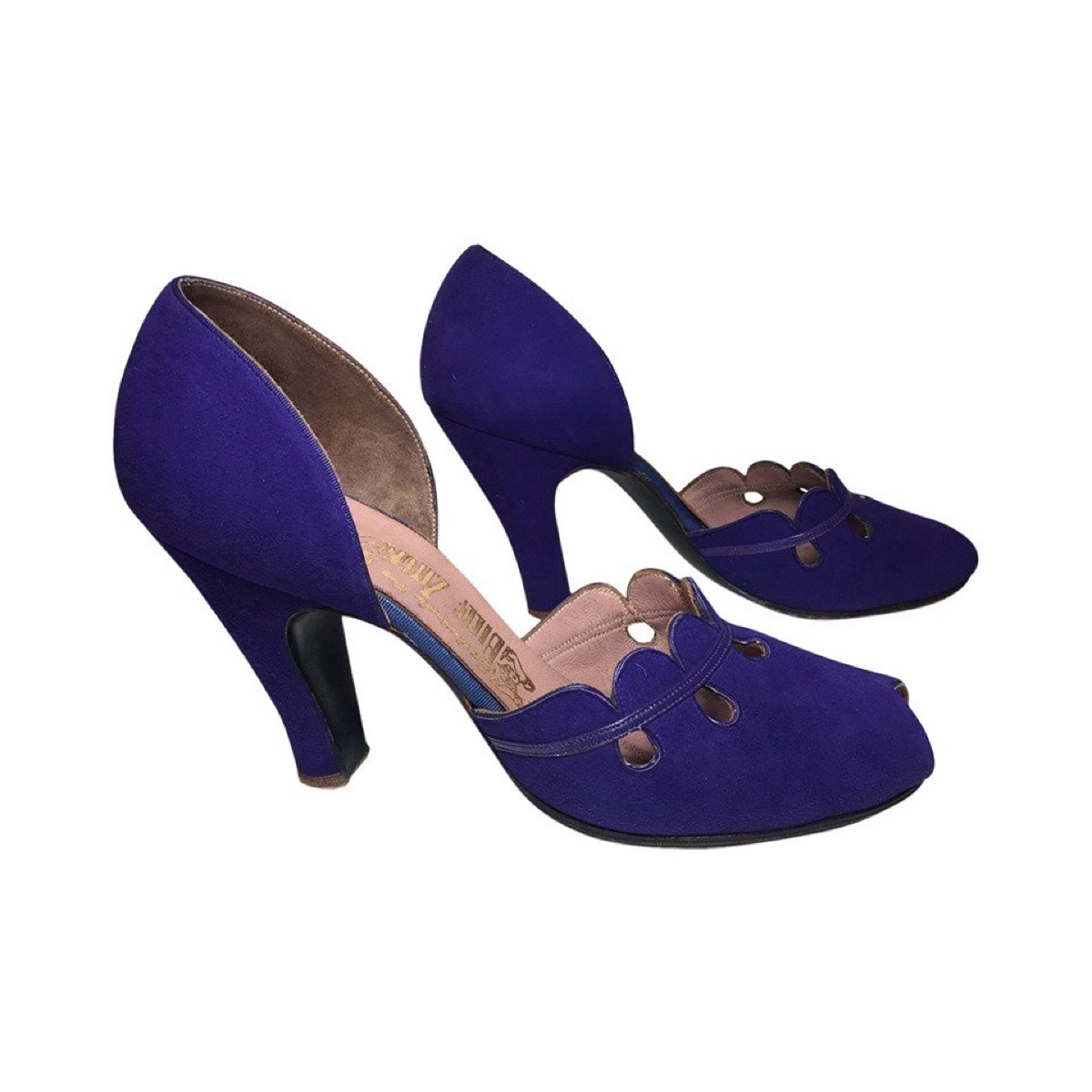
As the war came to an end, and women were no longer wearing the pants at home, styles shifted to more feminine footwear again.
Ruffle details were all the rage in the middle of the century. They were spotted in the '40s first and made their way into the '50s as well.
1947: Pointy-Toed Heels
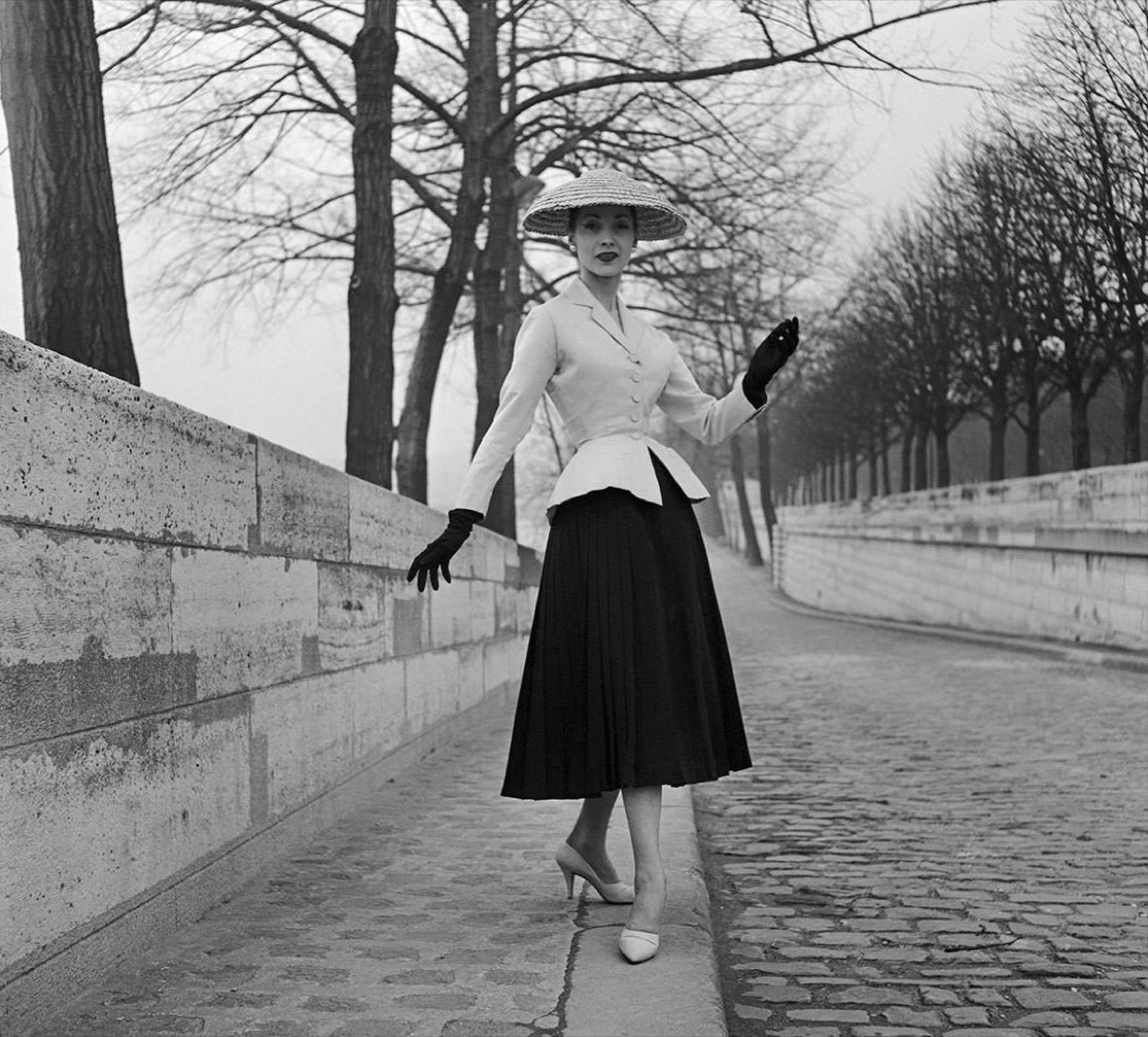
In February 1947, Christian Dior debuted an ultra feminine style that became the talk of the fashion world. The "New Look"—with its calf-length skirts and cinched waists that came to define post-war fashion—also featured pointy-toed shoes.
1948: Platforms

Carmen Miranda, the highest paid actress in Hollywood in the mid-1940s, made platform shoes popular over the course of the decade. Miranda wore an array of platform styles, taking her inspiration from Portuguese clogs.
1949: Loafers

Even after the war, when practicality went out the window in terms of footwear, loafers remained one of the most popular shoes.
Katharine Hepburn returned to the spotlight in 1949, thanks to the film Adam's Rib, and her androgynous fashion sense became stylish once again. According to Footwear News, "the film icon was known for her casual, often mannish approach to dressing," which included loafers.
1950: Heels With Fishnets
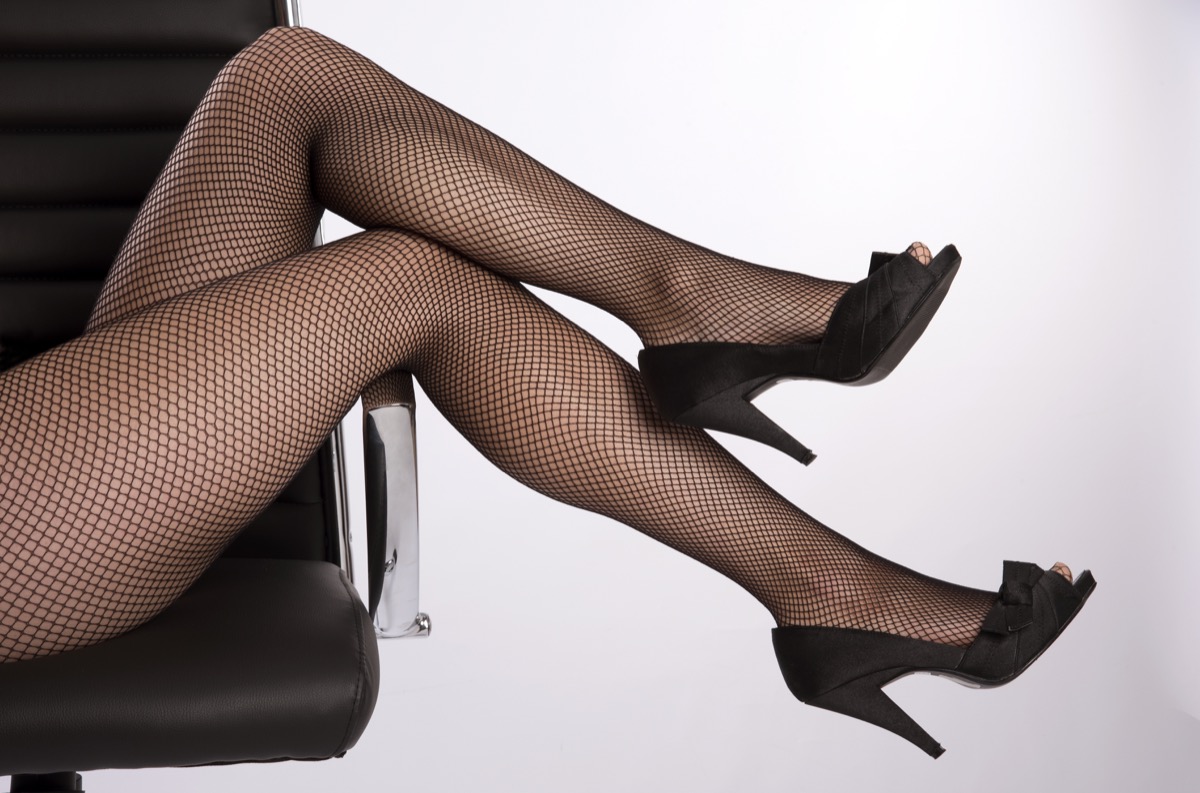
In the 1950s, much of women's footwear exuded femininity and sex appeal. Images of Ava Gardner often showcase her wearing strappy heels over black fishnet stockings. The look was the definition of sexy as we creeped into the latter half of the 20th century.
1951: Winter Boots
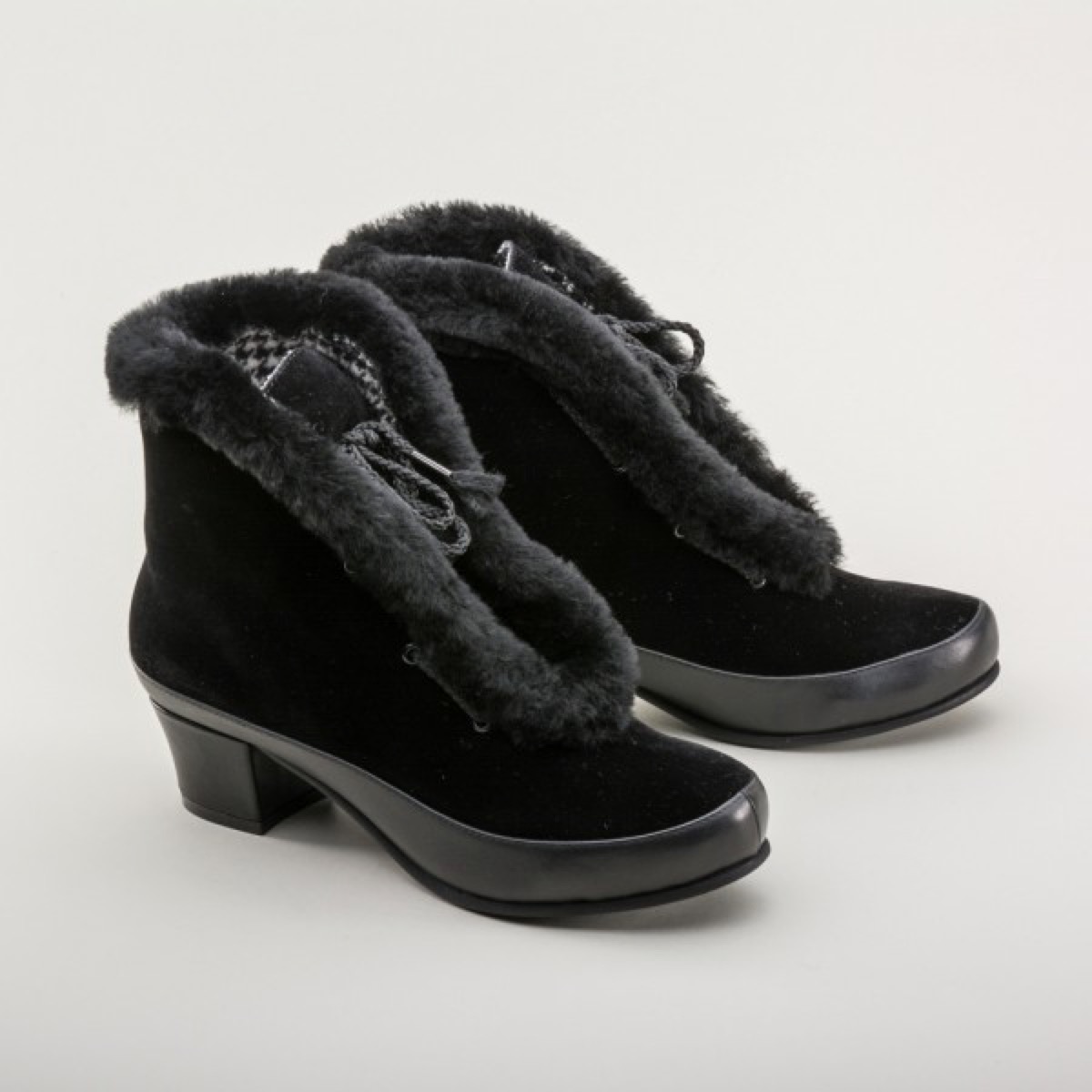
Though galoshes had existed for years, there was no snow-specific women's footwear in the first half of the 1900s. In the early 1950s, however, the first fur-lined winter boots hit the market.
They don't look much different from fashionable winter boots today, except for their low heel, which helped to maintain an ultra-feminine aesthetic.
1952: Oxfords
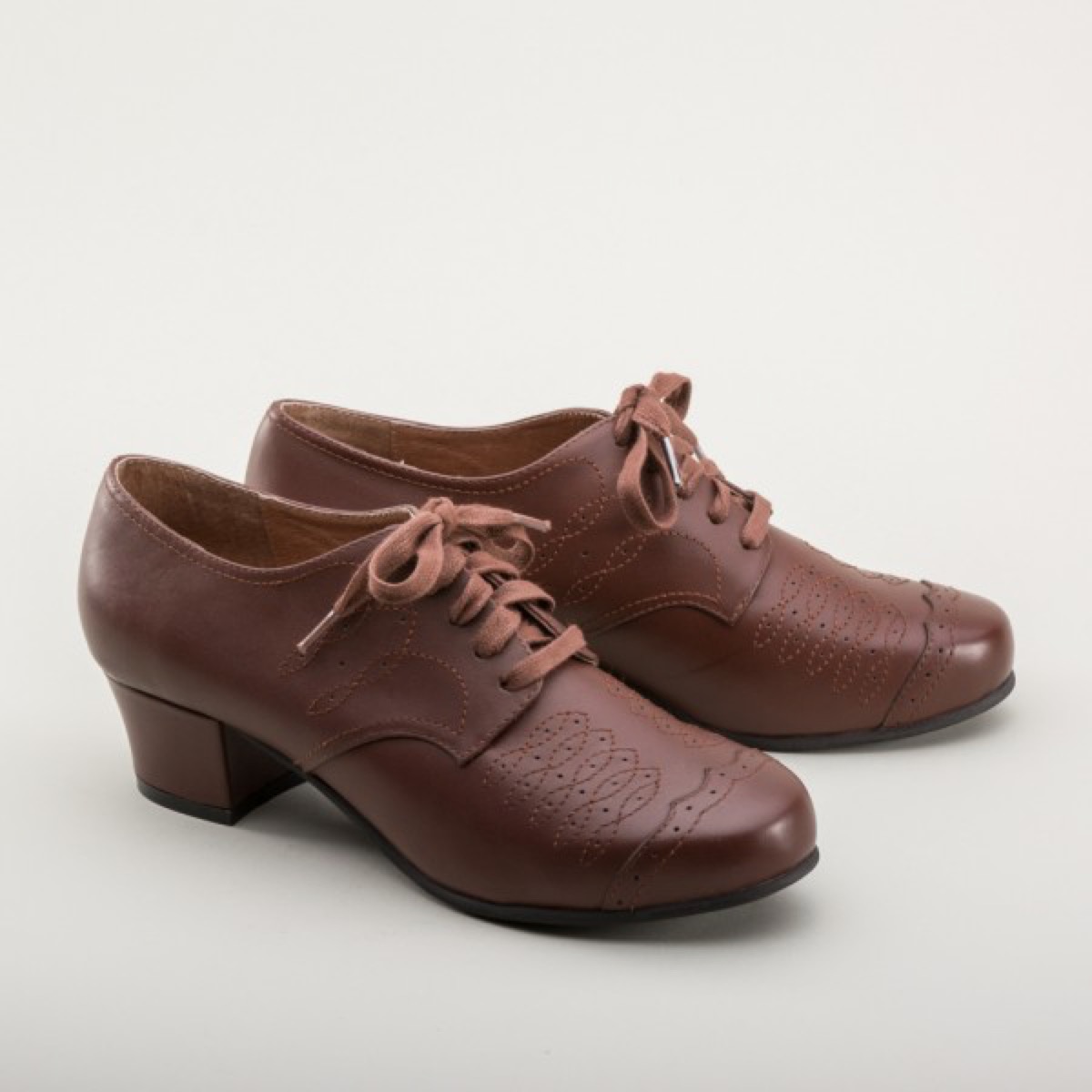
When Katharine Hepburn wore a menswear-inspired Oxford shoe in 1952 while golfing, a trend was born. "She was a trendsetter who often footnoted her signature wide-leg trousers with moccasins or oxfords," Footwear News explains.
1953: Ballet Flats
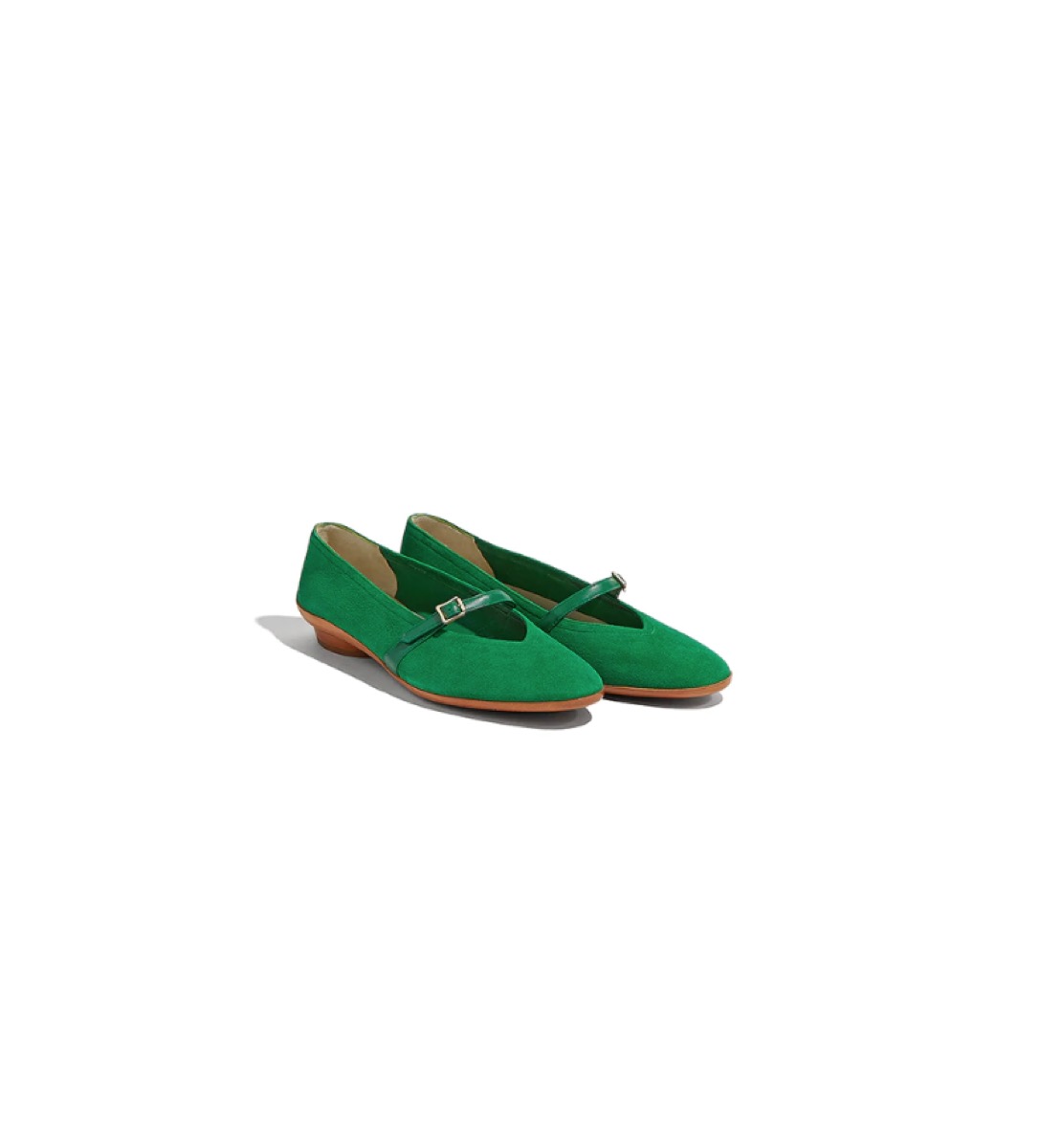
In the 1950s, anything Audrey Hepburn wore turned to gold. The actress, fashion icon, and classically-trained ballerina favorited the comfortable ballet flat, and soon enough, they were trending. Hepburn herself wore a custom ballet flat designed by Salvatore Ferragamo, which the designer still sells today.
1954: Slingback Pumps

An advertisement from 1954 reads: "Prettiest shoe on the avenue this month is a light and airy slingback pump." And that was the truth in the mid-1950s.
These shoes were, believe it or not, designed for safety. "The style assured women their feet would not slip out of the shoes—a dangerous and embarrassing accident," Vintage Dancer writes.
1955: White Slingbacks
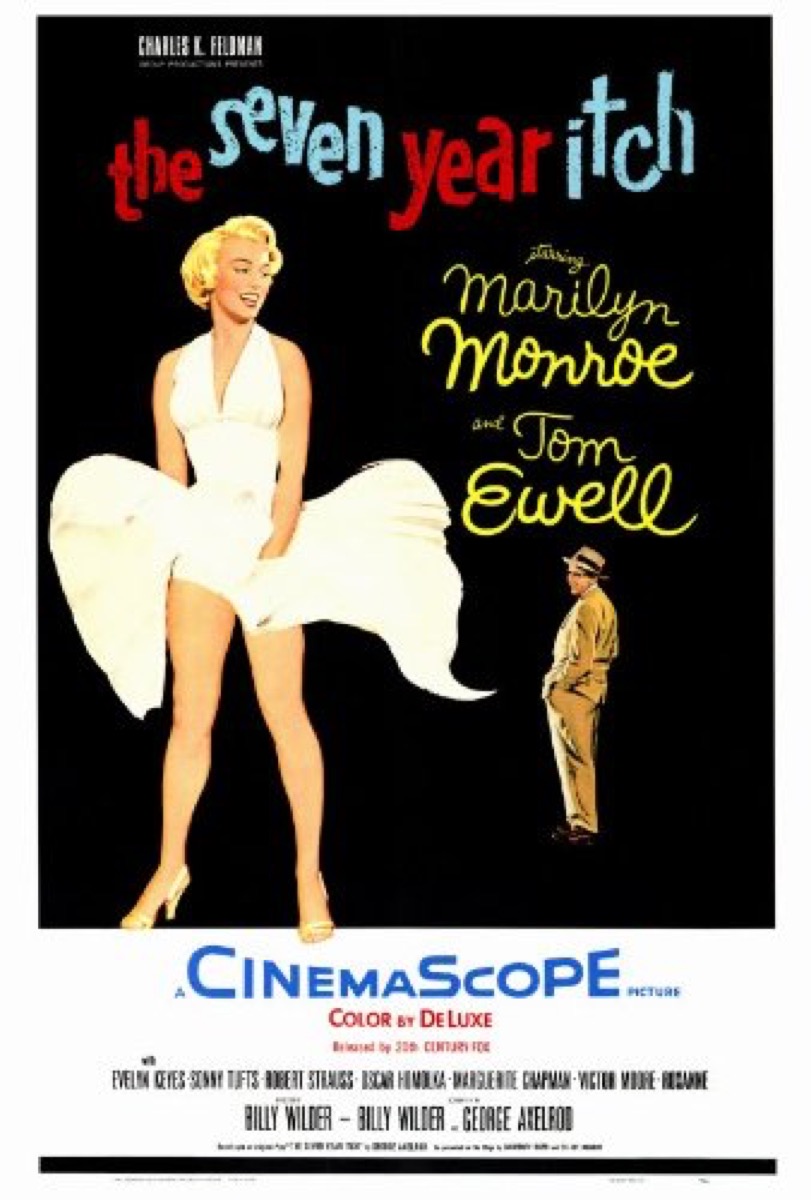
We're sure you're familiar with style icon Marilyn Monroe's epic white outfit from the 1955 film Seven Year Itch.
In one of the most legendary scenes in cinematic history, the actress sports a flowing white dress with high-heeled white slingbacks. And suddenly, women everywhere needed a pair.
1956: Repetto's Cendrillon Ballerina Flats

In 1956, designer Rose Repetto created the Cendrillon ballerina flats for actress Brigitte Bardot. According to Glamour, Repetto was originally a technical dance shoe company and Bardot was, like Hepburn, a trained ballerina. So it was a match in shoe heaven.
1957: Two-Toned Chanel Slingbacks
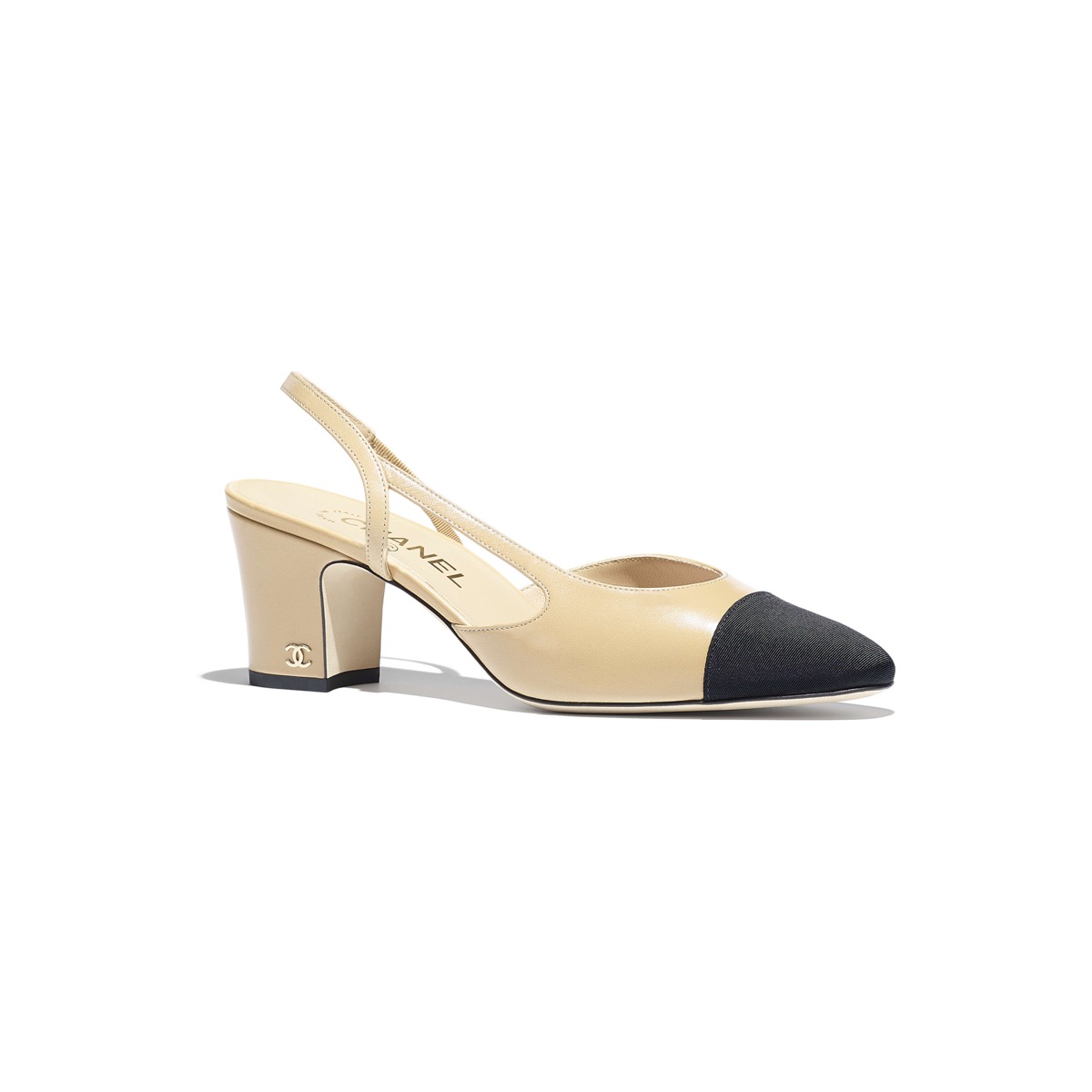
The two-toned Chanel slingbacks launched in 1957, featuring a beige body and a black toe cap. The shoe was meant to make the foot appear smaller, and the leg longer. And what woman of the '50s—or today, frankly—doesn't want that?
1958: Feminine Pumps

A decade after they were the height of fashion, feminine details re-emerged on the footwear market in the form of elegant bows, pointed toes, and subtle embellishments. "Things became very demure," Harper's Bazaar explains. "Feminine pumps with delicate details take over as the shoe to wear."
1959: Penny Loafers
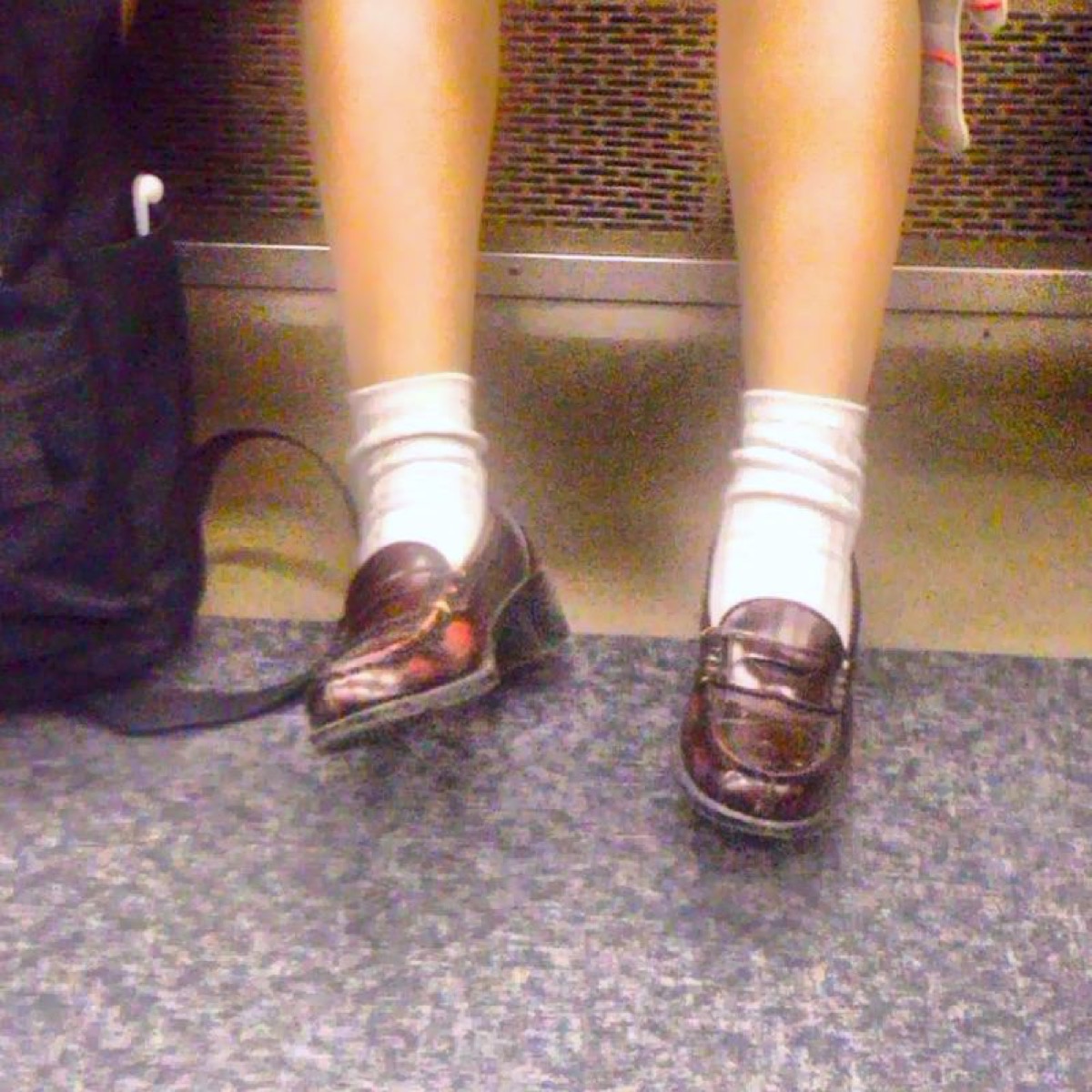
These slip-on shoes with a leather strap across the tongue were popular in the latter half of the 1950s. In 1957, Audrey Hepburn wore a suede pair in the film Funny Face, and soon enough, the style became associated with beatnik culture, Reader's Digest reports.
1960: Winklepickers

Extra elongated pointy-toed heels dominated the '60s and were called winklepickers. They originated in the U.K. where periwinkle snails—often called winkles—were a popular seaside snack.
In order to extract the snail meat, consumers used a pointed object—a process that was referred to as "winkling the snail out." And thanks to the shoe's very pointed tips, the nickname was born.
1961: Black Kitten Heels

In Breakfast At Tiffany's, which made its debut in October 1961, Audrey Hepburn paired her little black dress with a little black kitten heel. Considering this look is the definition of class and elegance today, you can only imagine the craze at the time. The low kitten heel continued to be popular throughout the '60s as a result.
1962: Converse

Sneaker sales soared in 1962, escalating from 35 million pairs a year to 150 million, according to Reader's Digest. But one sneaker dominated—and that was Converse.
The brand accounted for 80 percent of the U.S. sneaker market in the '60s.
1963: Thigh-High Boots

Things started to move on up… the leg, that is. In 1963, Roger Vivier created Yves Saint Laurent's thigh-high alligator skin boots. According to Vogue, "as the decade progressed, Vivier and others would bring the boot closer to the leg so that they looked like stockings and created a long streamlined look."
1964: Go-Go Boots
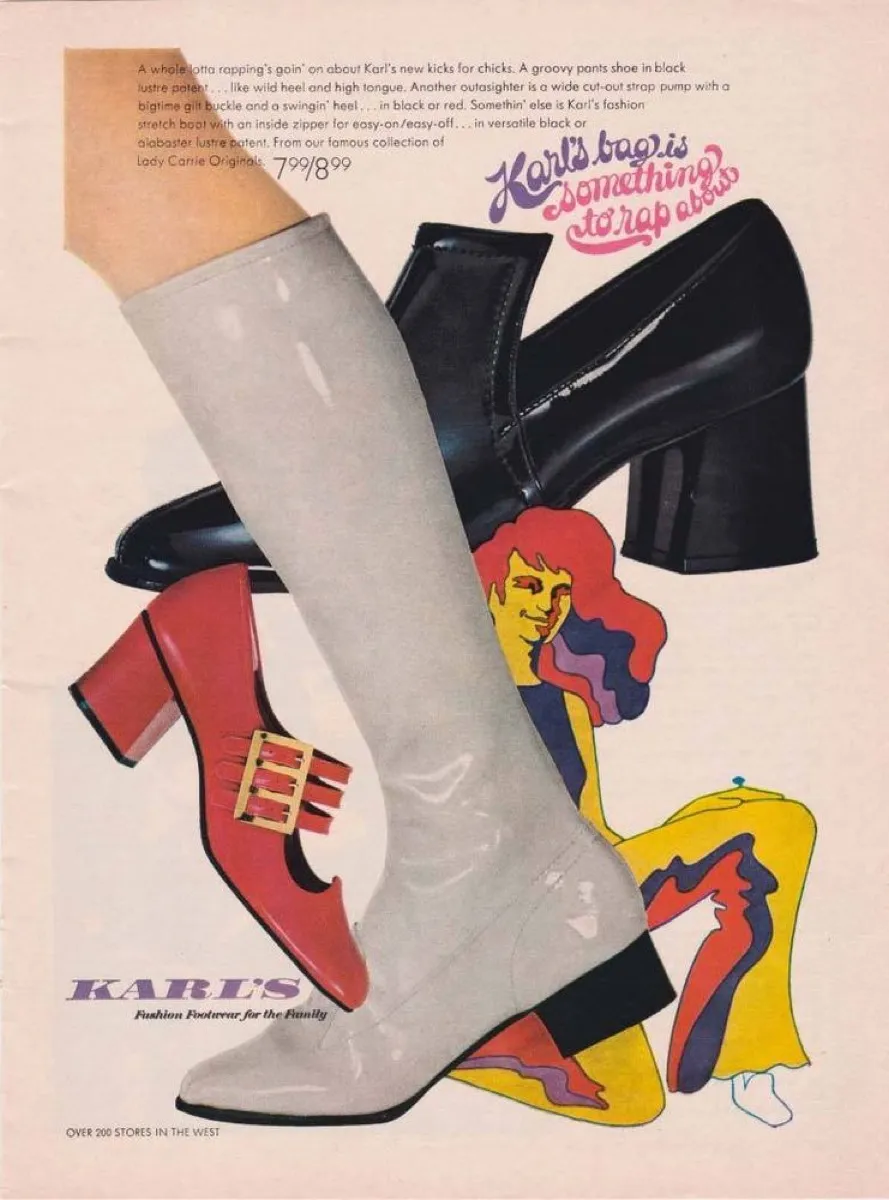
You'll see plenty of this style throughout the '60s, but many credit designer André Courrèges with launching the first pair as part of his 1964 collection. Courrèges's go-go boots were white with low-heels that came up mid-calf.
Their name, according to W magazine, is "derived from the French expression à gogo, meaning 'in abundance,' which is in turn derived from the ancient French word la gogue for 'joy.' It's also derived from the slang term 'go,' which was perpetuated around the same time to mean 'all the rage.'" And go-go boots are certainly all that and more.
1965: Low Block Heels
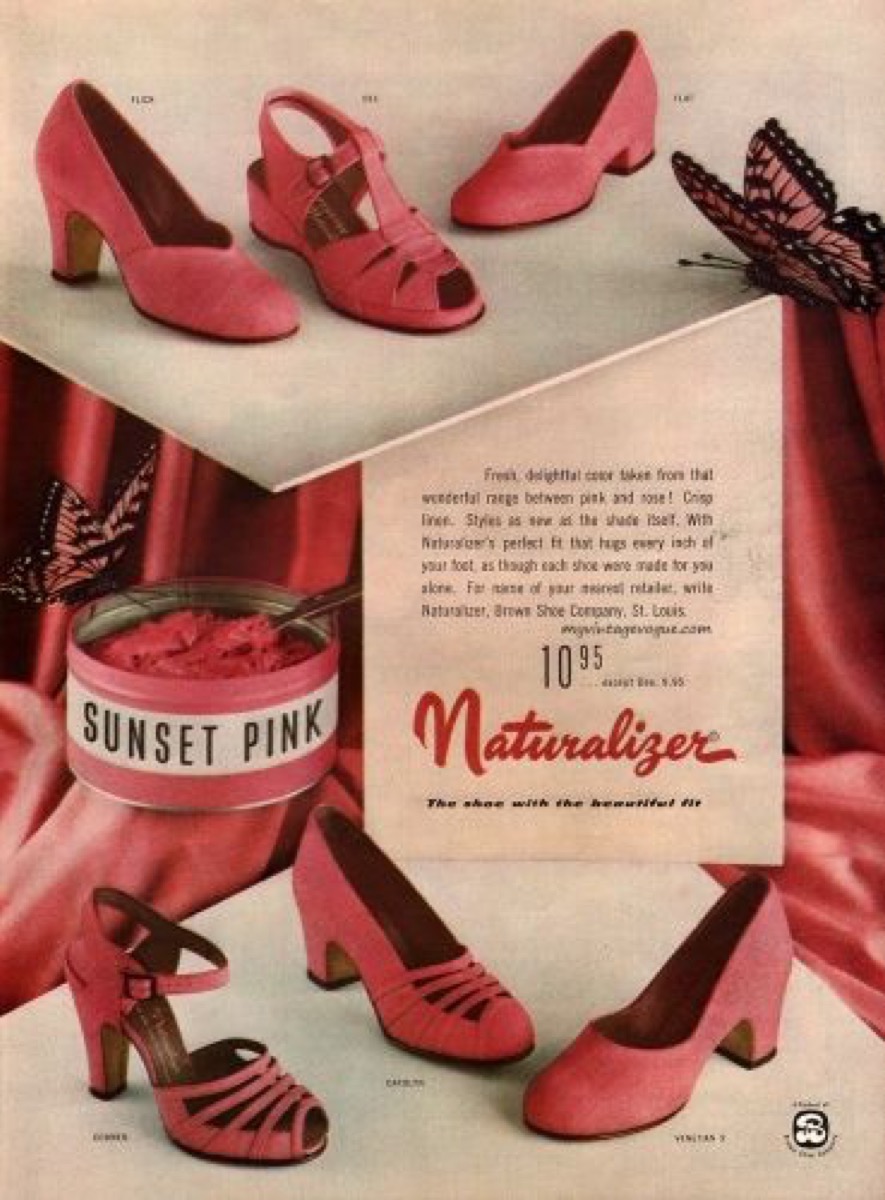
As boots were getting higher, heels were getting lower. "In the sixties, low-heeled shoes epitomized liberated feminine style and defined the looks of style icons," designer Olive Aubrey told The Daily Mail.
1966: Mid-Calf Black Leather Boots

We'll forever hear Natalie Sinatra's "These Boots Are Made For Walkin'" playing in our heads every time we try on a new pair of boots. The music video for the song, released in 1966, featured women in mid-calf black leather boots with a low heel. And it wasn't long before these boots were everywhere.
1967: Pilgrim Pumps

The pilgrim pump—with its blunt chisel toe—was the antithesis of the pointed-toe shoe. This shoe featured large clips or buckles and a low, comfortable heel.
Roger Vivier became famous for the style, and he has Catherine Deneuve to thank for their increased popularity. The actress wore the shoes with silver buckles in the '60s film Belle de Jour. To this day, Vivier still makes the pilgrim-esque shoes.
1968: Birkenstocks

Birkenstocks, which date back to the late 1800s, made their U.S. debut in the late 1960s, thanks to one German-American woman who discovered them on a trip to her home country. On her vacation, Margot Fraser, who had struggled with foot pain for years, tried Birkenstock's new arch support technology, which they'd launched in 1966.
It wasn't long before the sandals healed her. Fraser decided to distribute Birkenstocks back in the states. In a matter of a few years, men, women, and children were all enjoying these sandals, whether it was with socks or without.
1969: Bright Go-Go Boots
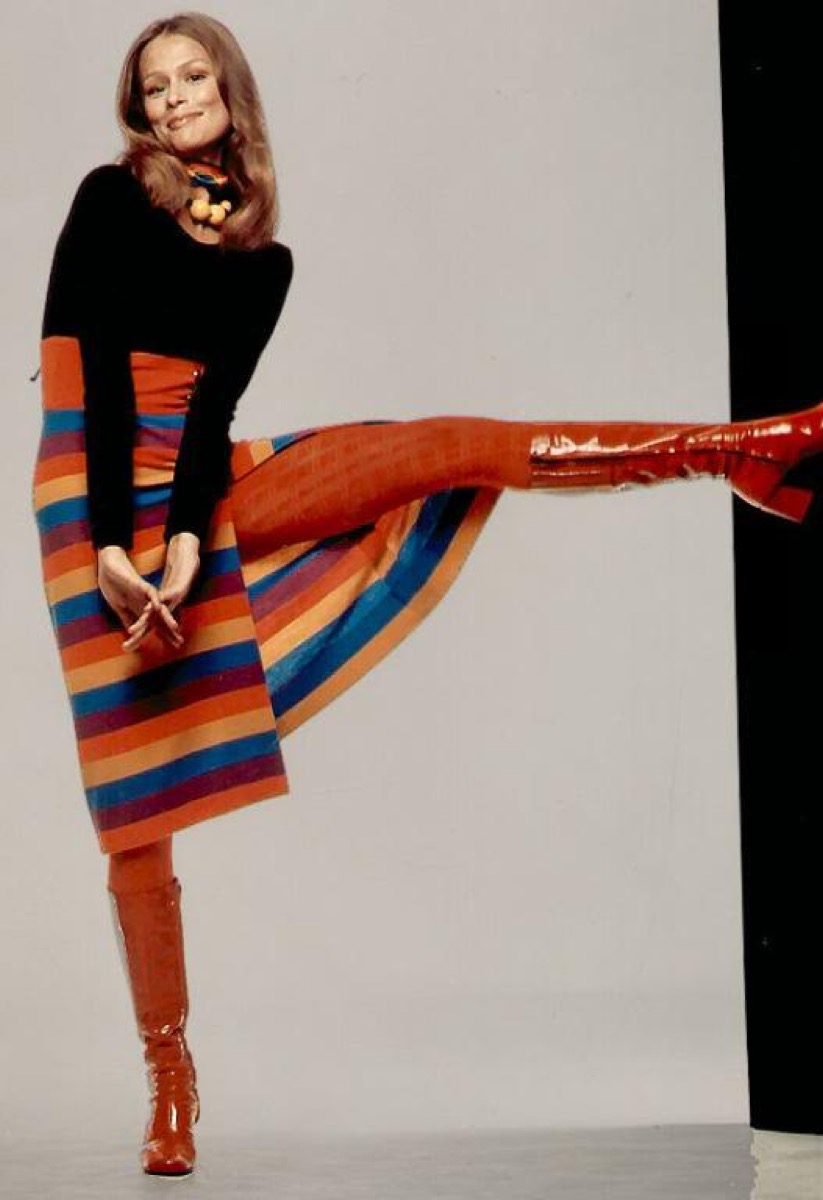
By the end of the '60s, go-go boots got even bolder and brighter. And with the space race peaking in 1969, with the success of Apollo 11, go-go boots were the perfect space shoes.
1970: Suede Thigh-High Boots
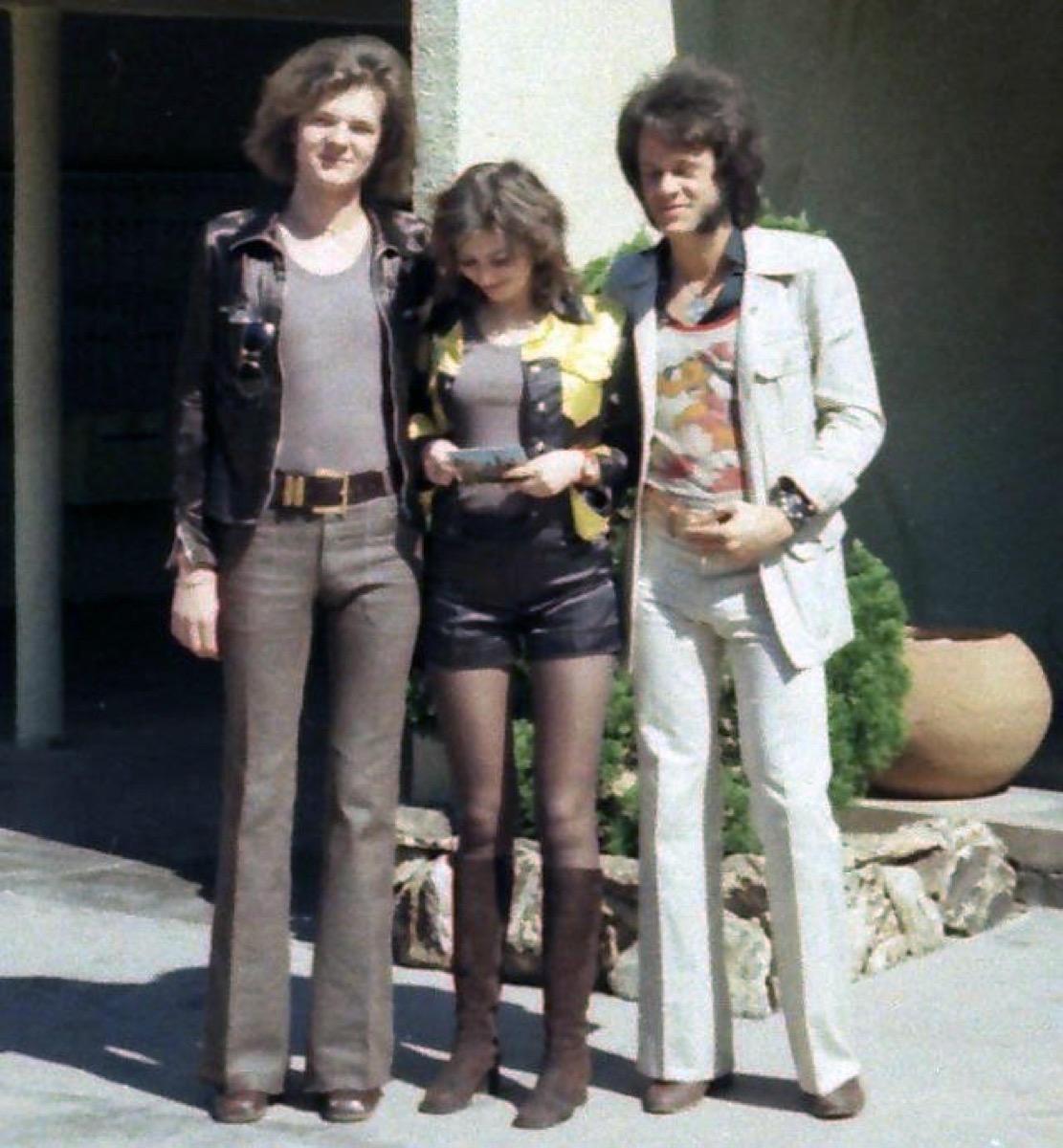
A new decade reached even grander heights. In the '70s, thigh-high boots came into fashion, with styles hugging the upper leg in softer fabrics like suede.
1971: Adidas
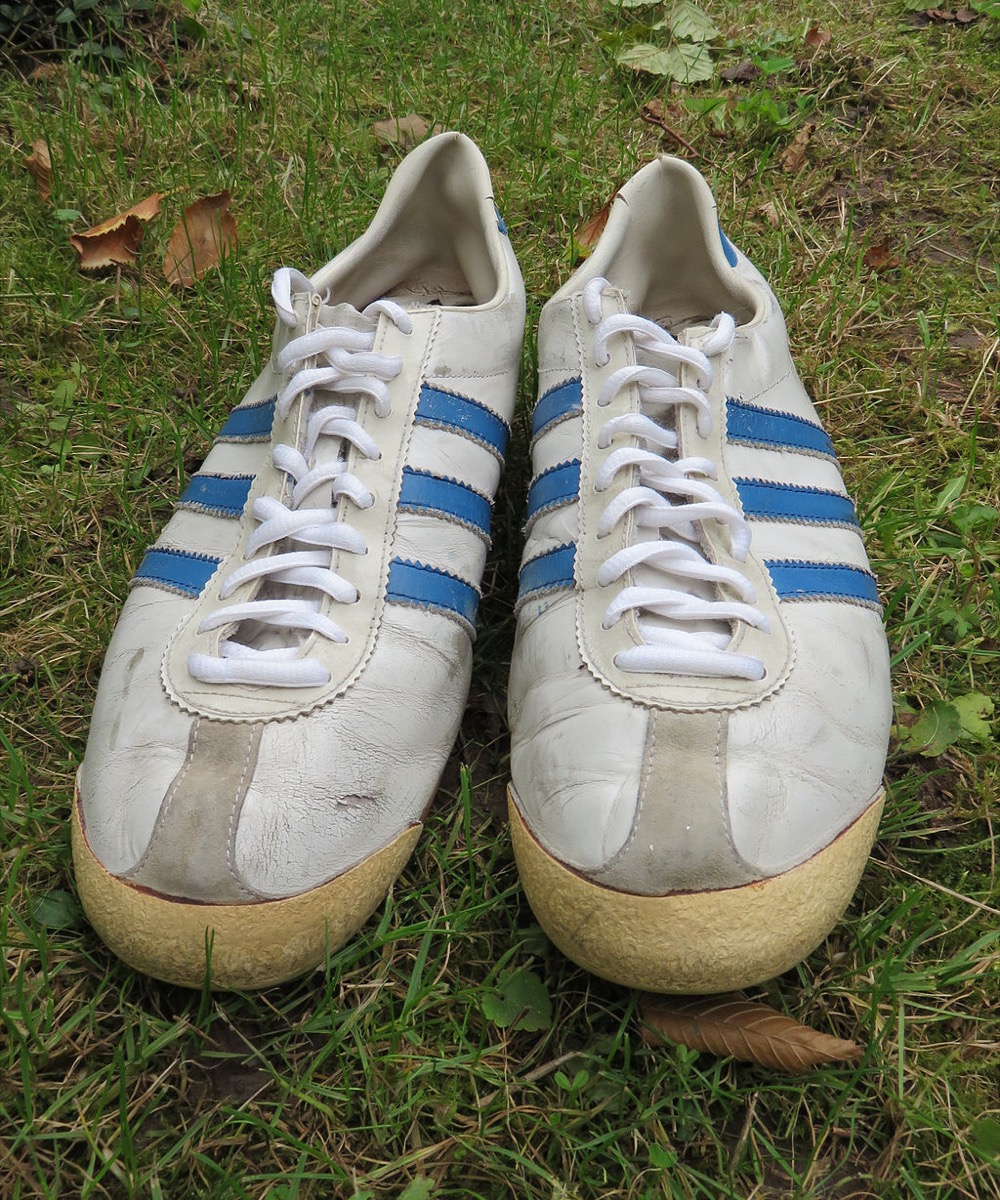
Adidas released a few memorable sneakers in 1971: the Jabbar, the Americana, and the Stan Smith. The casual footwear marked a new era for Adidas, which had long been associated with serious athleticism.
That same year, Adidas launched its three-leaf shape trefoil logo, meant to represent the main landmasses of the Americas, Europe and Africa, and Asia respectively. Soon, it became a symbol of cultural consciousness and Adidas were everywhere.
1972: Clogs
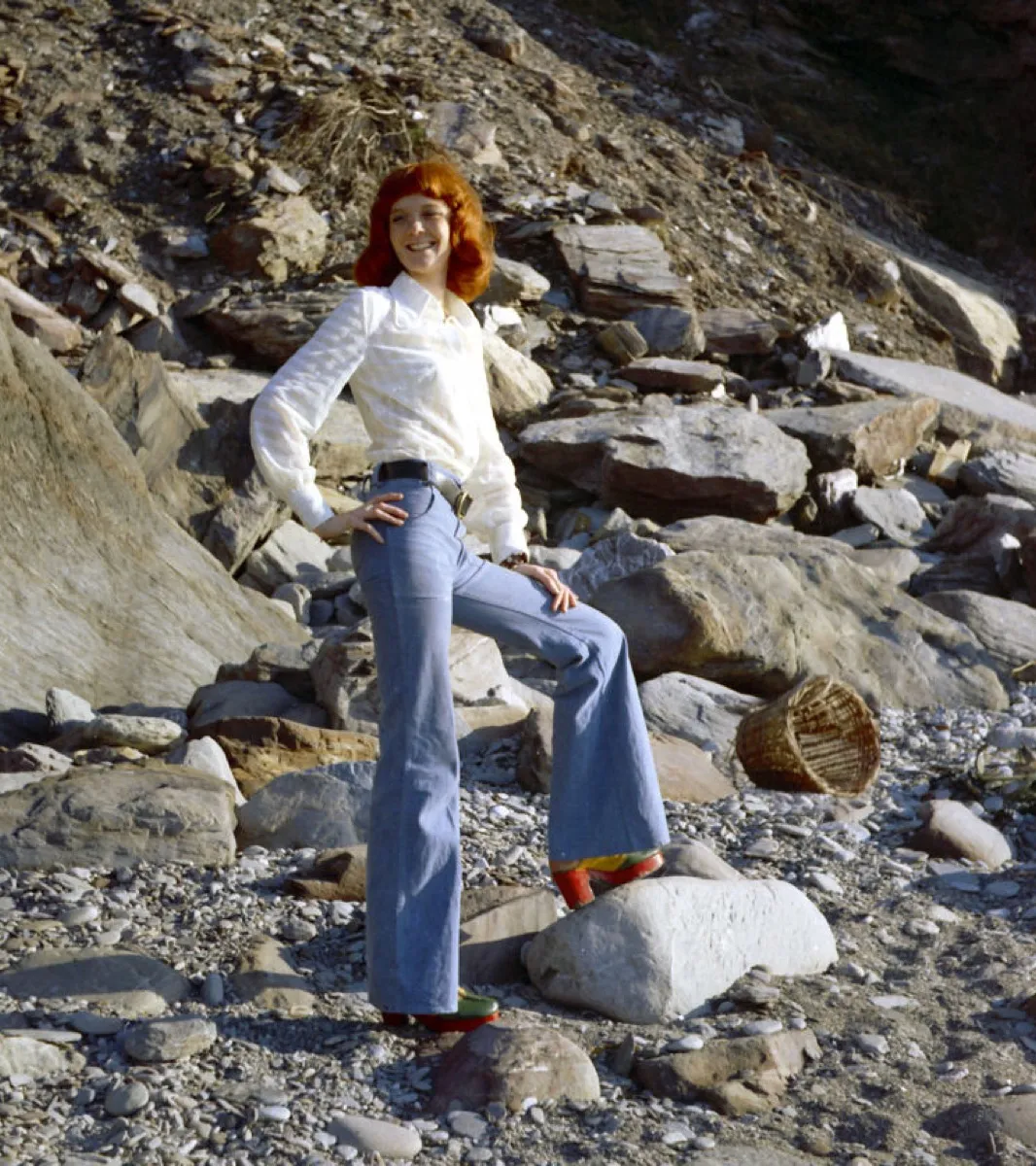
Clogs were a popular shoe choice in the '70s, especially with a pair of super-wide bell bottoms. They jived with the hippie culture that was in full force by the time the early '70s rolled around.
1973: Platform Heels
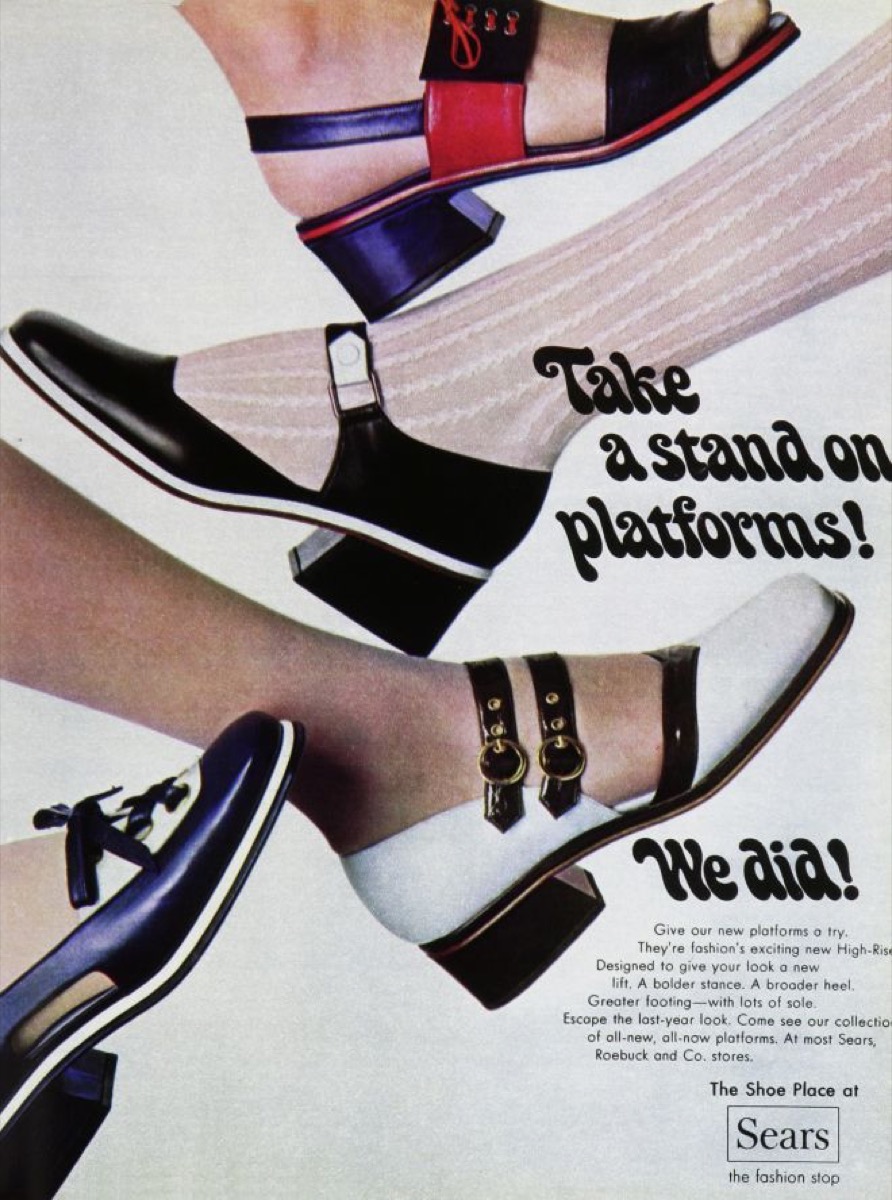
Platform heels, as Harper's Bazaar put it, became something every "It girl" sported. "The platform was unleashed in teen magazines and by the 1970s, it was the rage," Flashbak.com reports.
Musicians were really the ones bringing this trend back. And KISS, which formed in 1973, took it to a whole new level.
1974: Mary Janes
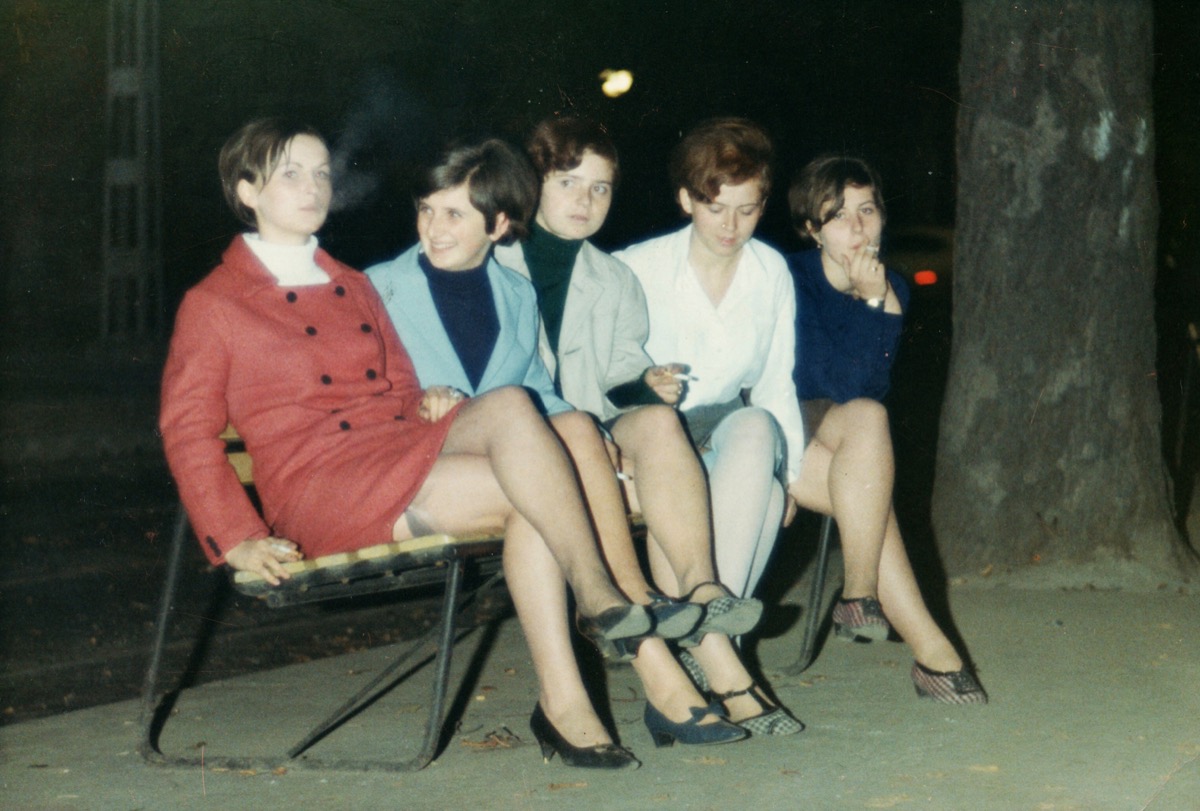
Mary Janes had been the signature shoe among all children—boys and girls alike—in the first quarter of the 1900s, but in the 1970s, they returned with an elegant twist.
They featured the platform heels of other popular shoes at the time and a tasteful strap, perfect for the professional woman.
1975: Gladiator Sandals
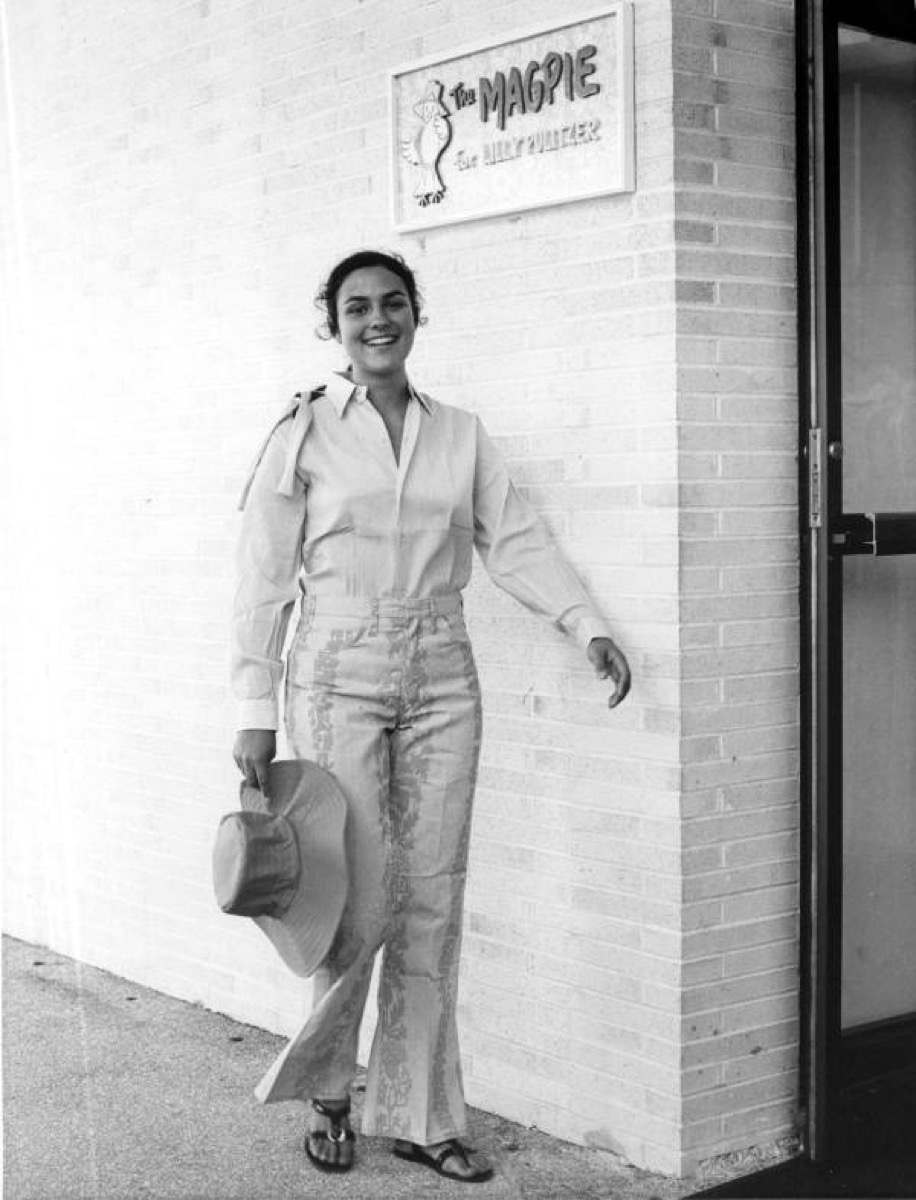
Though millennials will remember gladiator sandals as an early 2000s trend, they were first a big hit in the 1970s (after, you know, the Romans, that is).
Like clogs, they fit perfectly with the bohemian vibe of the decade.
1976: Dr. Martens
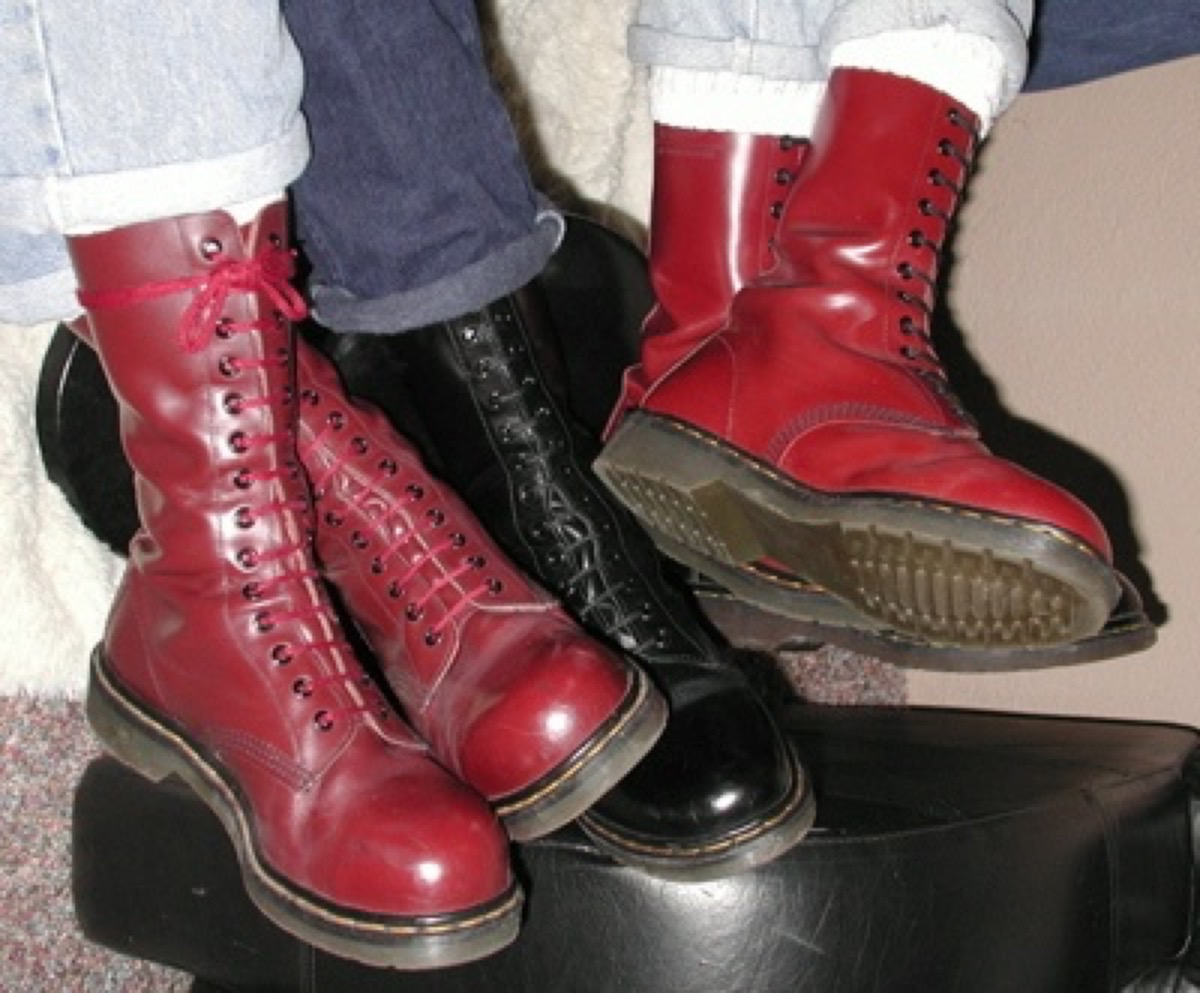
Dr. Martens, a popular work-wear shoe in the '60s in the U.K., became a popular choice for '70s youth. "By the end of the decade, the boot had become a fierce symbol of self-expression," Dr. Martens' website notes.
1977: High Wedge Sandals

High wedge sandals, like those made by Kork-Ease, were a dance floor staple in the '70s, particularly after the release of Saturday Night Fever in 1977.
The sandal, which featured a comfortable cork wedge bottom and ankle straps, "populated every corner of the country where disco reigned," as Kork-Ease's website explains.
1978: Heeled Mules
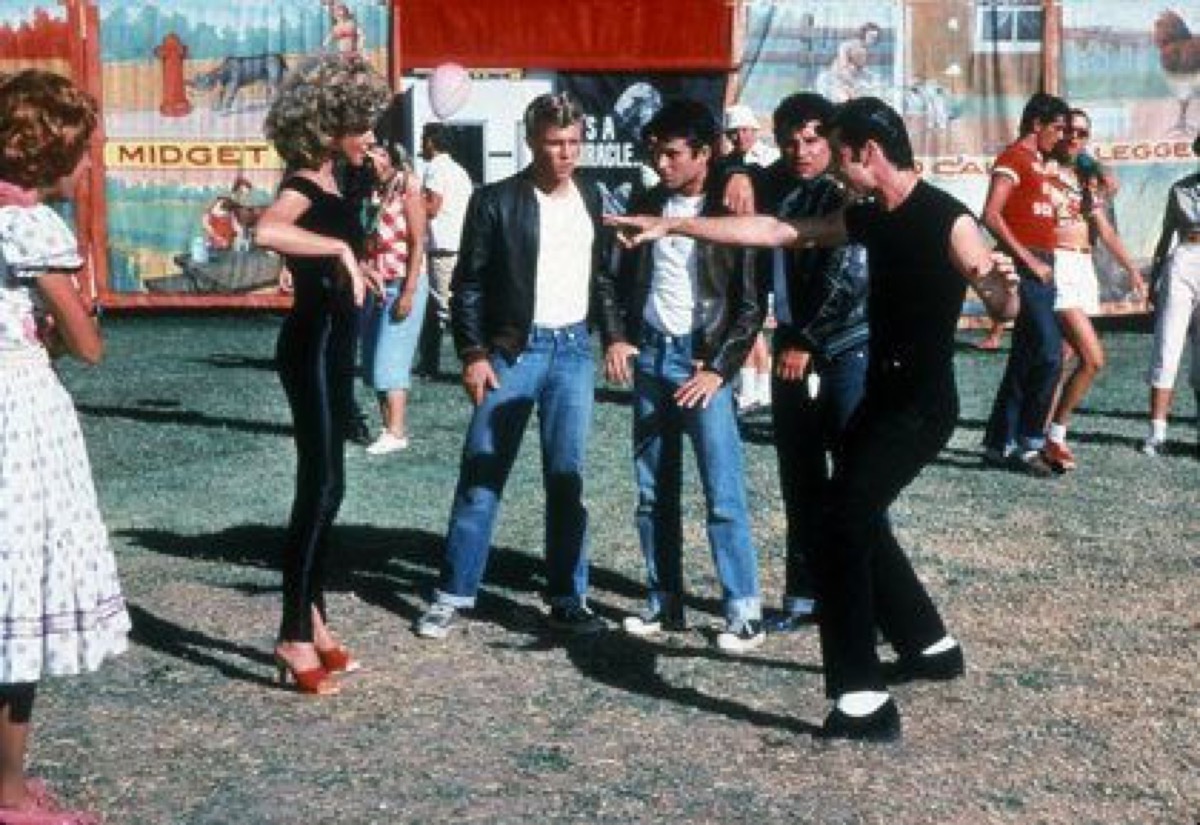
In 1978, Grease changed everything, and in terms of footwear, it brought us the coolest pair of mules the world had ever seen.
In the movie's final moments, Olivia Newton John's Sandy rocked red heeled mules with her all-black ensemble. Stomping out a cigarette never looked so good and soon, these were the shoe of the hour.
1979: Slouchy Boots
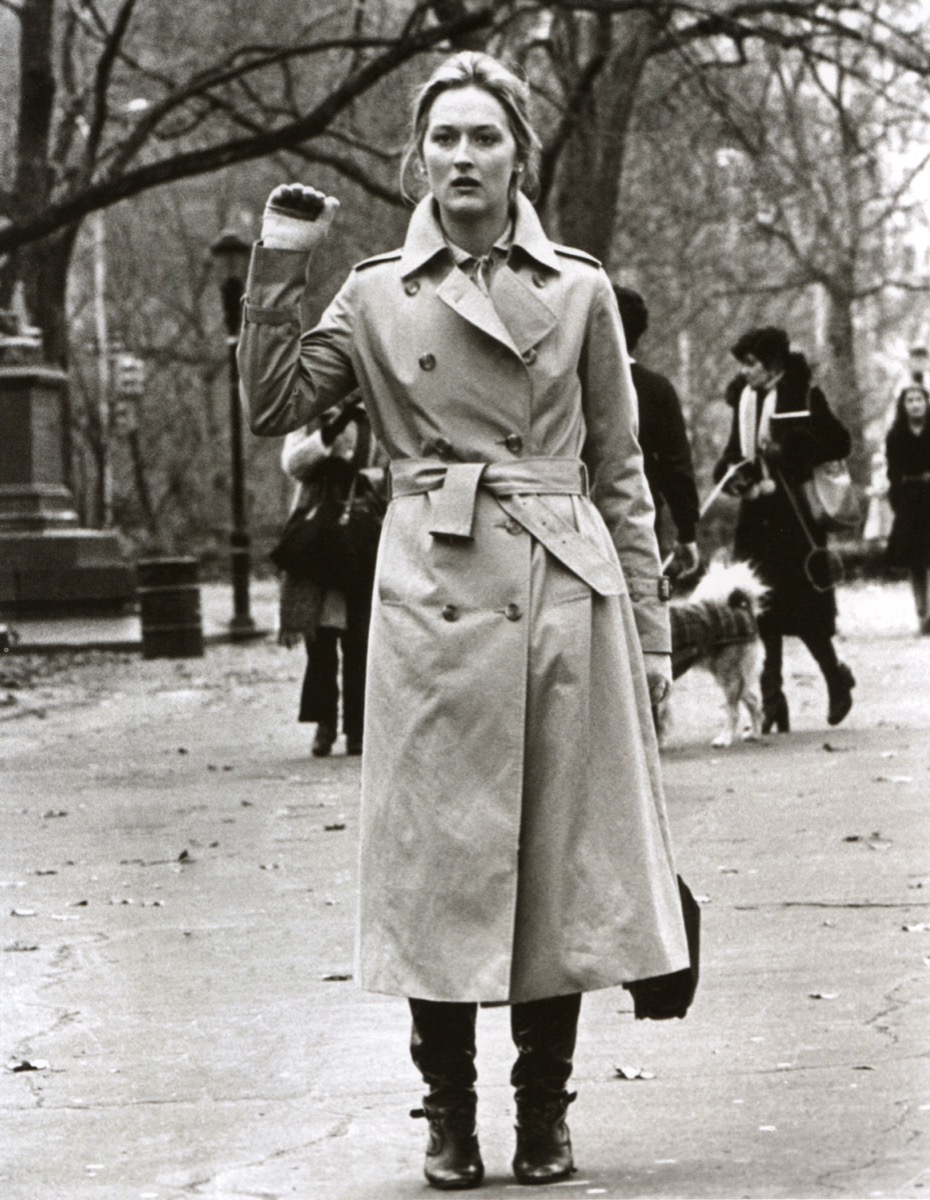
When Meryl Streep wears slouchy boots, we all wear slouchy boots. The actress donned this footwear in the 1979 film Kramer vs. Kramer, and the style was a serious deviation from boots of the past decade. Instead of being tight-fitted, they were loose and wrinkled in an effortlessly chic way.
1980: Jellies

Jellie sandals, including those made by Bert Geller or Thierry Mugler for Grendha, were everywhere throughout the '80s. These shoes were all the rage, whether you had them in clear or a variety of other colors.
In 1980, Sak's Fifth Avenue reported that the average customer purchased three pairs of Geller's jellies, according to FIDM Museum.
1981: Bright Pumps
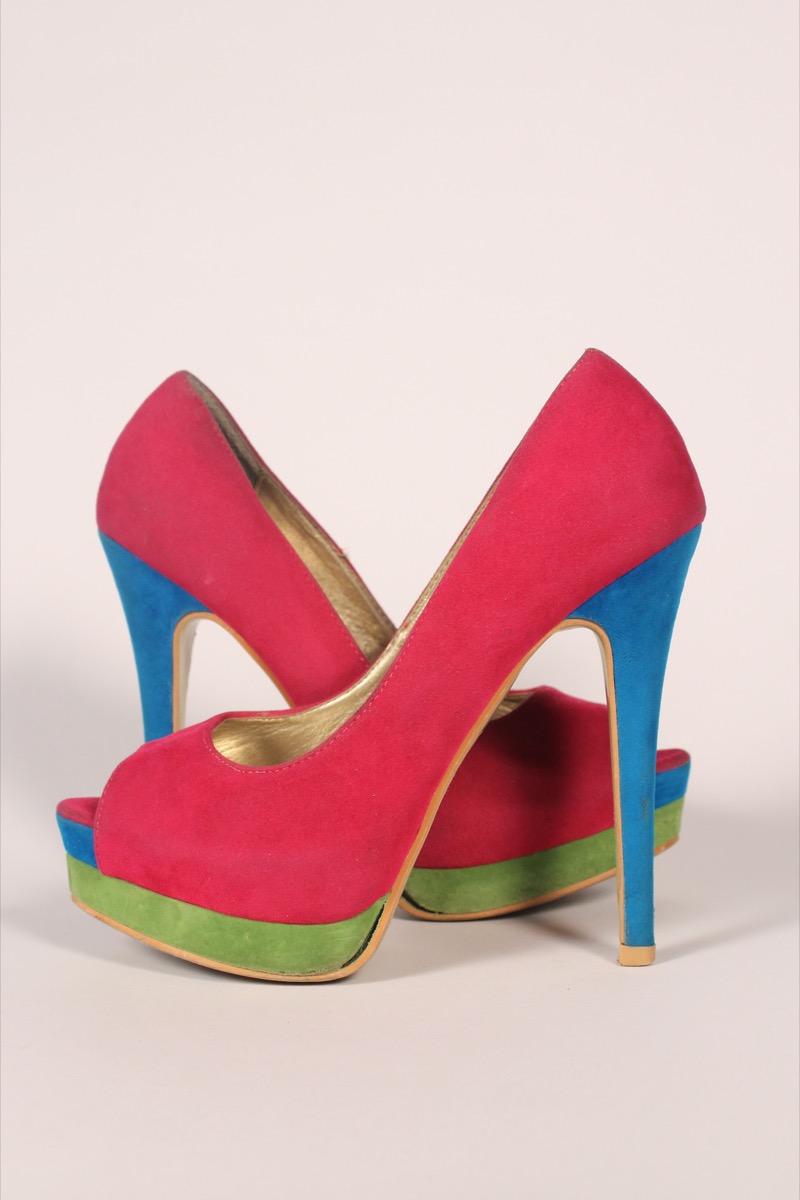
Some shoes never go out of style, like a good pair of classic pumps. But in the early '80s, nude and black versions were being traded in for brighter hues. After all, this was the decade where neon reigned supreme.
1982: White Pumps
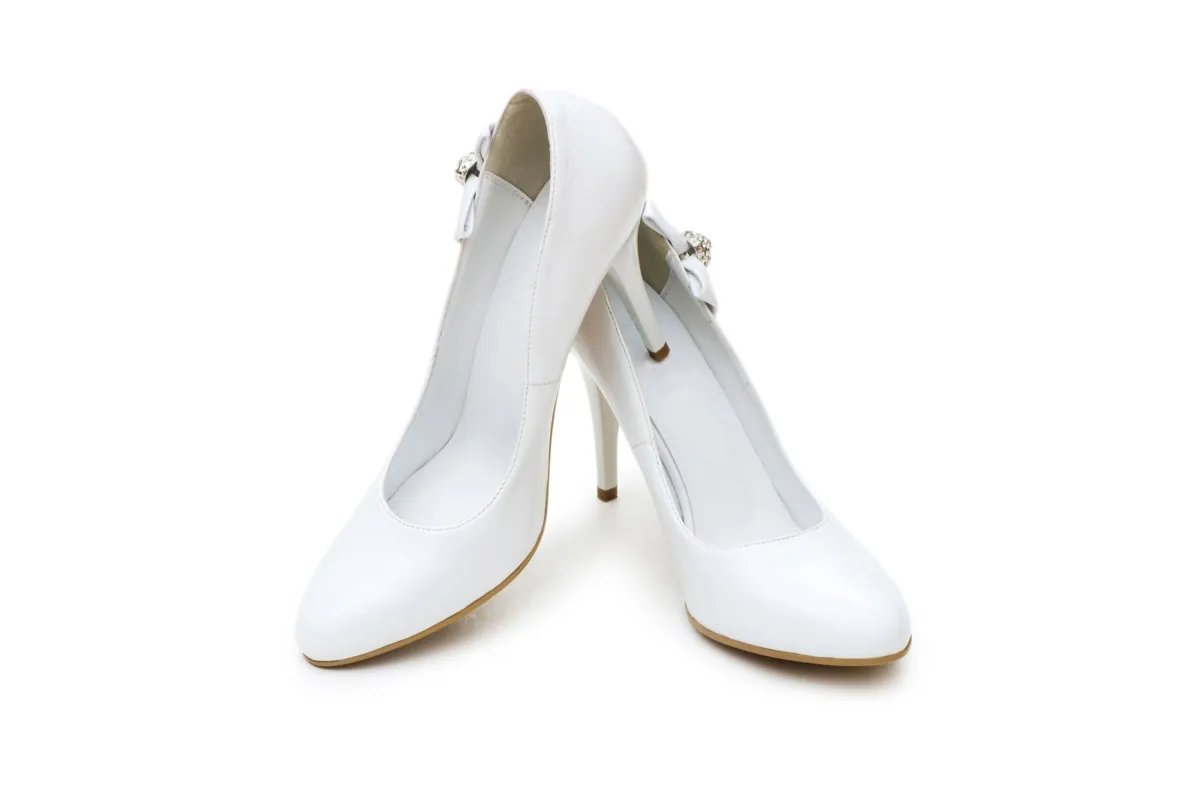
And if your pumps weren't hot pink in the '80s, then they were probably white. "The white stiletto once stood for style that was bold, brash and sexy," The Guardian explained.
1983: Sparkly Details

We all know '80s fashion included its fair share of sequins and sparkle, and shoes were no exception. By 1980s standards, rhinestones made otherwise simple shoes that much more glamorous. These days, we'd probably see it as tacky.
1984: Satin Shoes
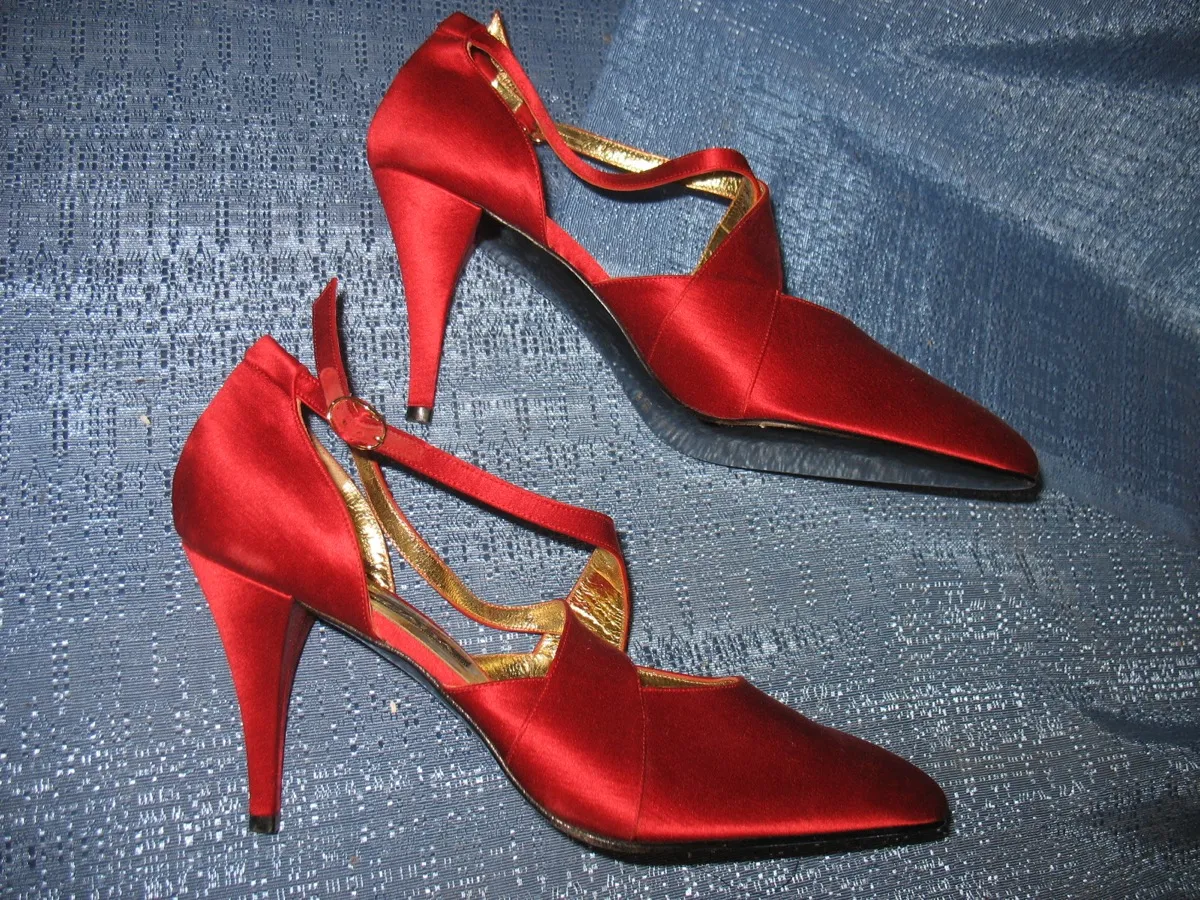
In the '80s, the only thing better than sparkle was satin, as The Insider points out.
1985: Sneakers With Skirts
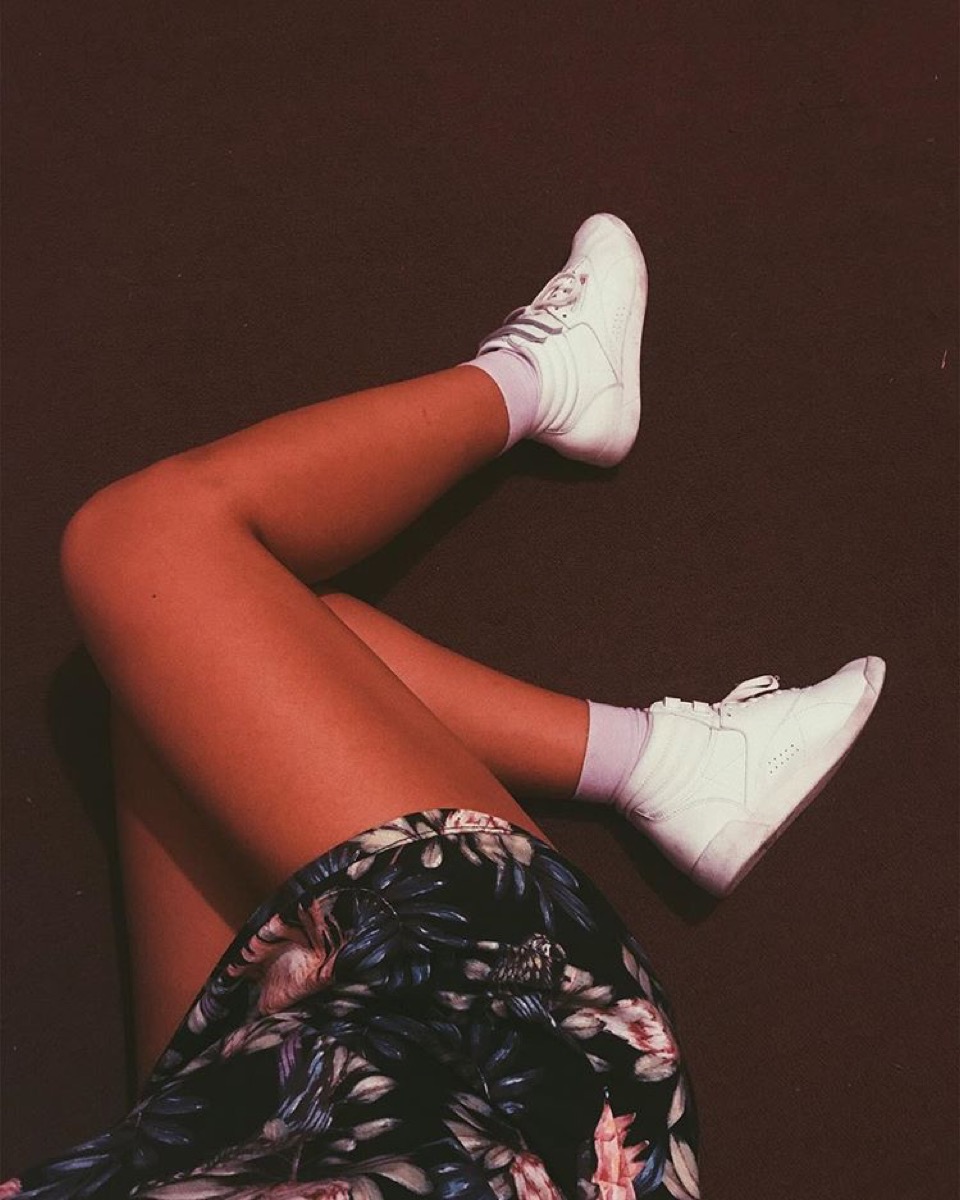
Athletic sneakers, like the Reebok Freestyles Jane Fonda wore in her 1982 workout video, trended in the '80s.
As Reader's Digest explained in 1980, a transit workers strike forced many New Yorkers to walk to work for 11 days, which soon made sneakers and skirt suits not just necessary, but fashionable. Melanie Griffith famously rocked this look in the 1988 movie Working Girl.
1986: Air Jordans

Originally produced in 1985 to celebrate basketball great Michael Jordan, the Nike Air Jordans quickly became a popular shoe amongst not just athletes, but fans of both genders.
1987: Keds
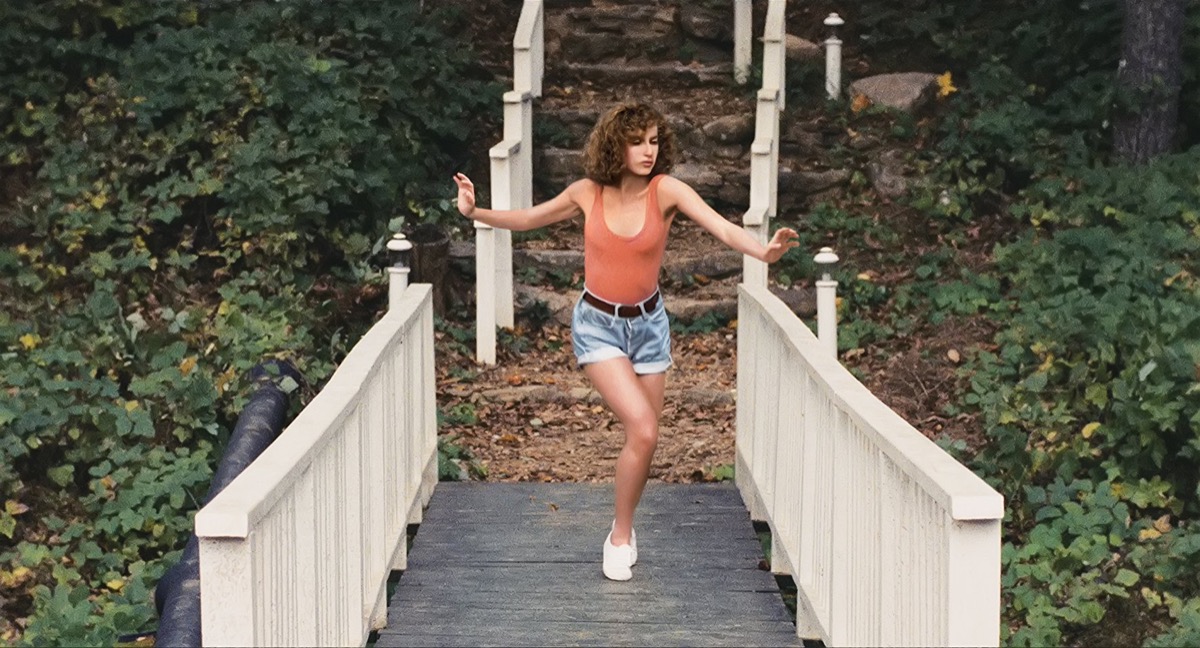
Bright white Keds, like the ones Jennifer Grey wore in the 1987 film Dirty Dancing, became a favorite sneaker in the '80s as well, Glamour notes. Hey, if they helped her carry a watermelon, imagine what they could do for you!
1988: Patent Leather
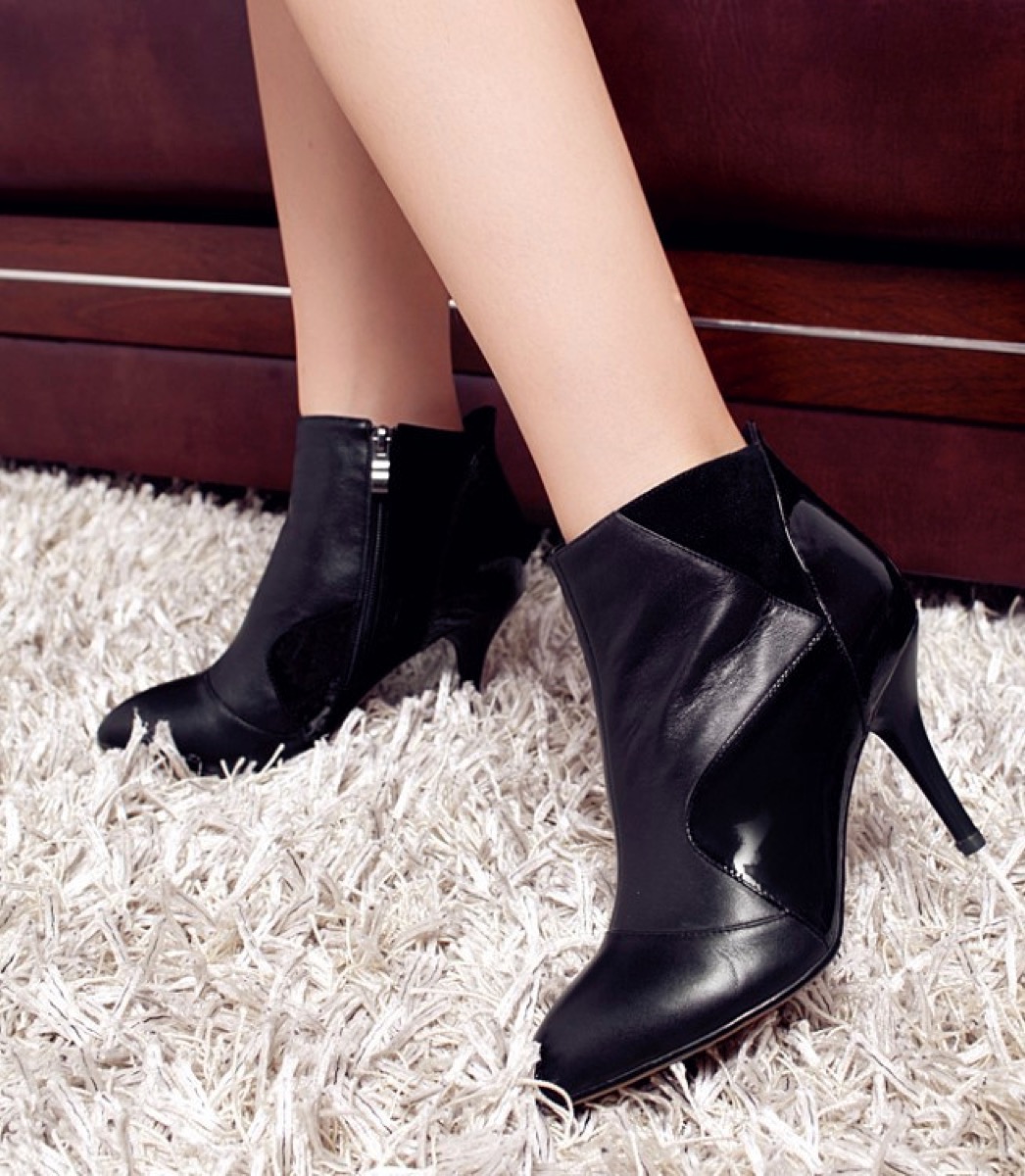
Patent leather shoes were another quintessential '80s trend, according to The Insider. This extra-shiny fabric could be seen on everything from a high heel to a boot. Considering its sheen factor, it's no wonder women of the '80s loved patent leather.
1989: Dyeables

Dyeables, or shoes that were dyed to match your outfit, were very trendy in the late '80s, particularly for formal events. People would buy a pair of white or lightly colored satin shoes and have them dyed to match their gowns or cocktail dresses.
Because in the '80s, if you weren't perfectly matching, you were a style "don't."
1990: The Monochromatic Look
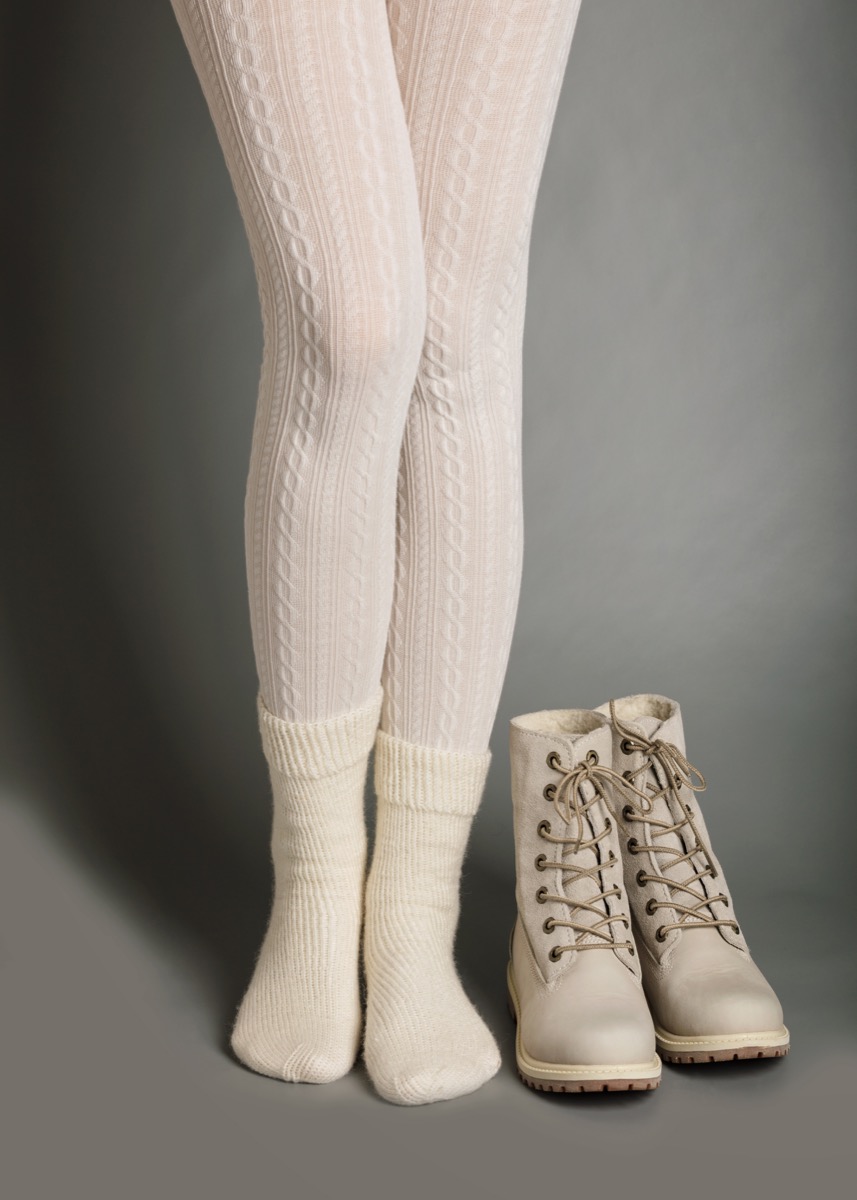
In the '90s, women took matching to the next level with fully monochromatic ensembles. If you were wearing black tights, then you'd be wearing black shoes to boot. And yes, the same went for white, too.
1991: Platform Sandals
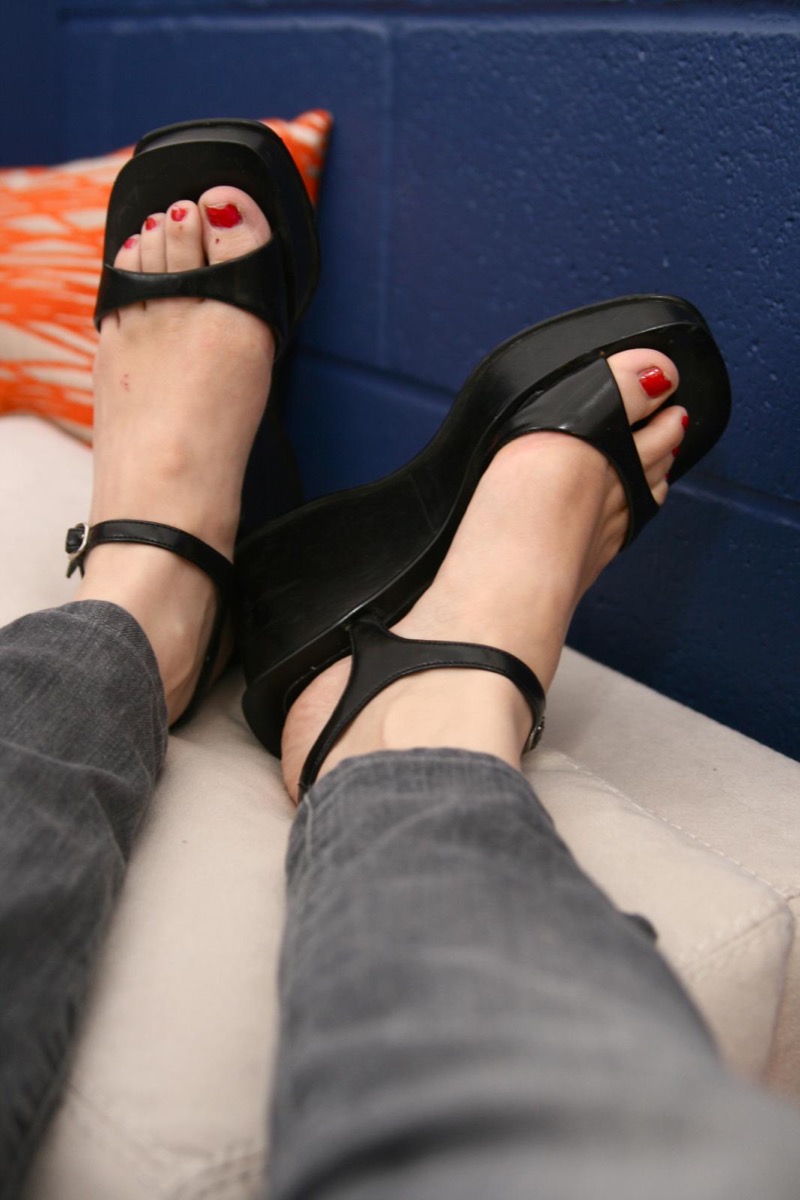
Platform sandals, both casual and more formal, came back in style in the '90s. Women in this era wore everything from a platform flip-flop to a platform jelly sandal and beyond. The higher the sandal, the closer to style icon.
1992: L.A. Lights

Casual footwear was also very indicative of '90s style, so sneakers were everywhere. But the coolest of the cool wore L.A. Gear light-up sneakers called L.A. Lights.
The sneakers launched in 1992 and, as The Daily Dot reports, the company sold over five million pairs of the light-up shoes in their first 12 months on the market.
1993: Christian Louboutin's Red Bottoms
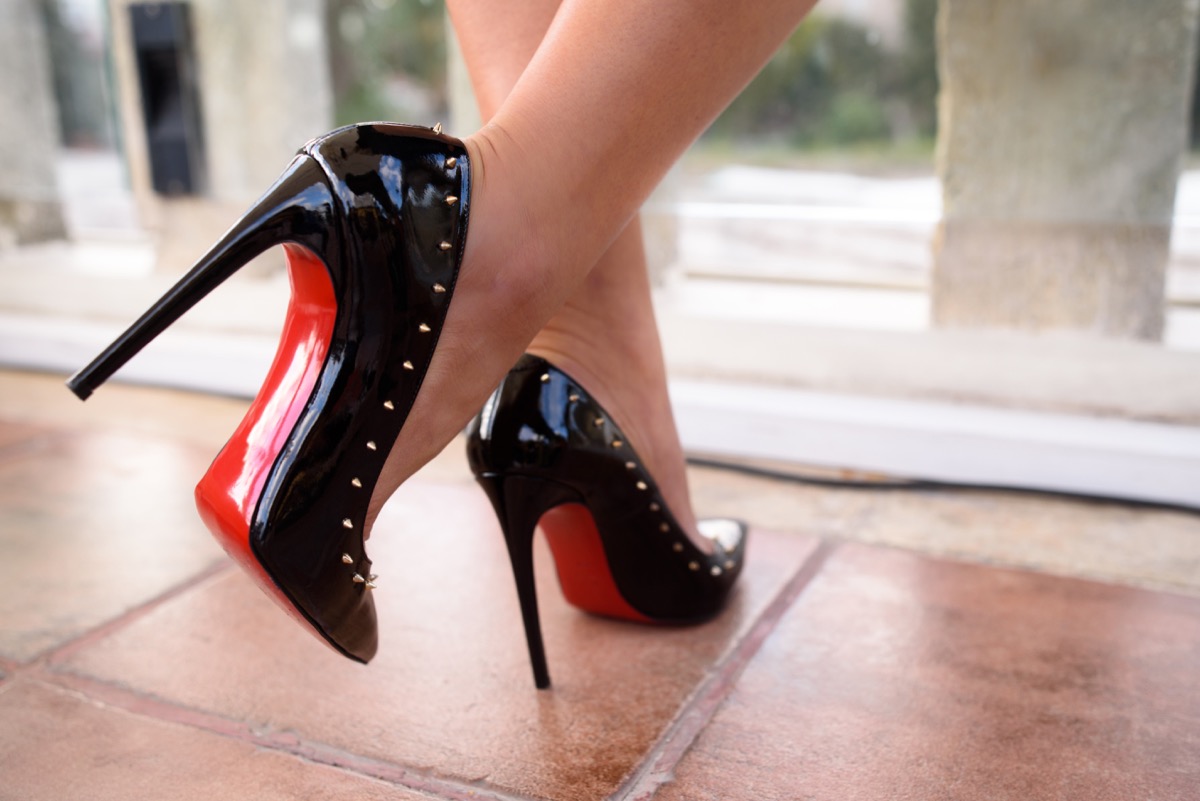
In 1993, Christian Louboutin, inspired by a work of art by Andy Warhol, picked up a bottle of red nail polish and painted the bottom of one of his designer shoes, as Glamour recounts. And ever since, women's footwear has never been the same.
Louboutin's red-bottomed shoes, particularly the stilettos, have become a stylish status symbol—and still are to this day.
1994: Combat Boots

With grunge culture reigning supreme in the 1990s, combat boots became its signature shoe.
The look—as Claire Danes perfectly exemplified on My So-Called Life, which launched that year—was combat boots, slouchy socks, dark tights, and a flowing floral dress. And with the '90s making a comeback these days, you probably have seen this outfit out there recently too.
1995: Strappy Sandals

Strappy sandals were considered the epitome of elegance in the mid-'90s, thanks to Mariah Carey, whose album Daydream came out in 1995. Her signature style was always accompanied by strappy sandals—so it wasn't long before they were the definition of sexy footwear.
1996: Steve Madden Mules

If you didn't own a pair of Steve Maddens mules, you probably didn't see much of the 1990s. These shoes had a soft, wide strap over the top and a very chunky platform (of course).
Various versions of this shoe were spotted on countless celebrities, including Sarah Michelle Gellar and Halle Berry, InStyle notes.
1997: The Highest Platforms Ever
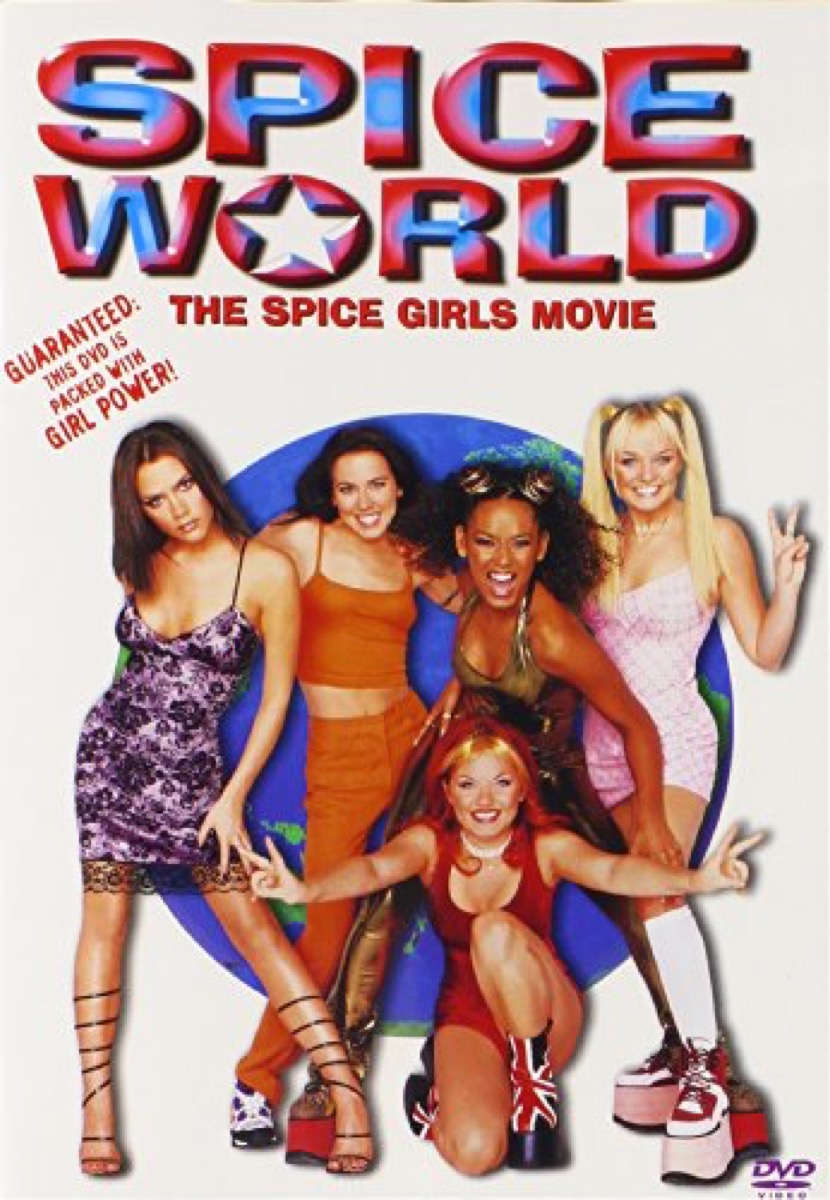
After the Spice Girls song "Wannabe" finally made it to the U.S. in 1997, their giant platform shoes followed.
As Footwear News notes, the women "popularized German-manufacturer Buffalo's cartoonish platform 1310-2 sneakers, which were designed with four-to-eight-inch platforms." Who needs heels when you have these?
1998: Metallic, Glittery Shoes
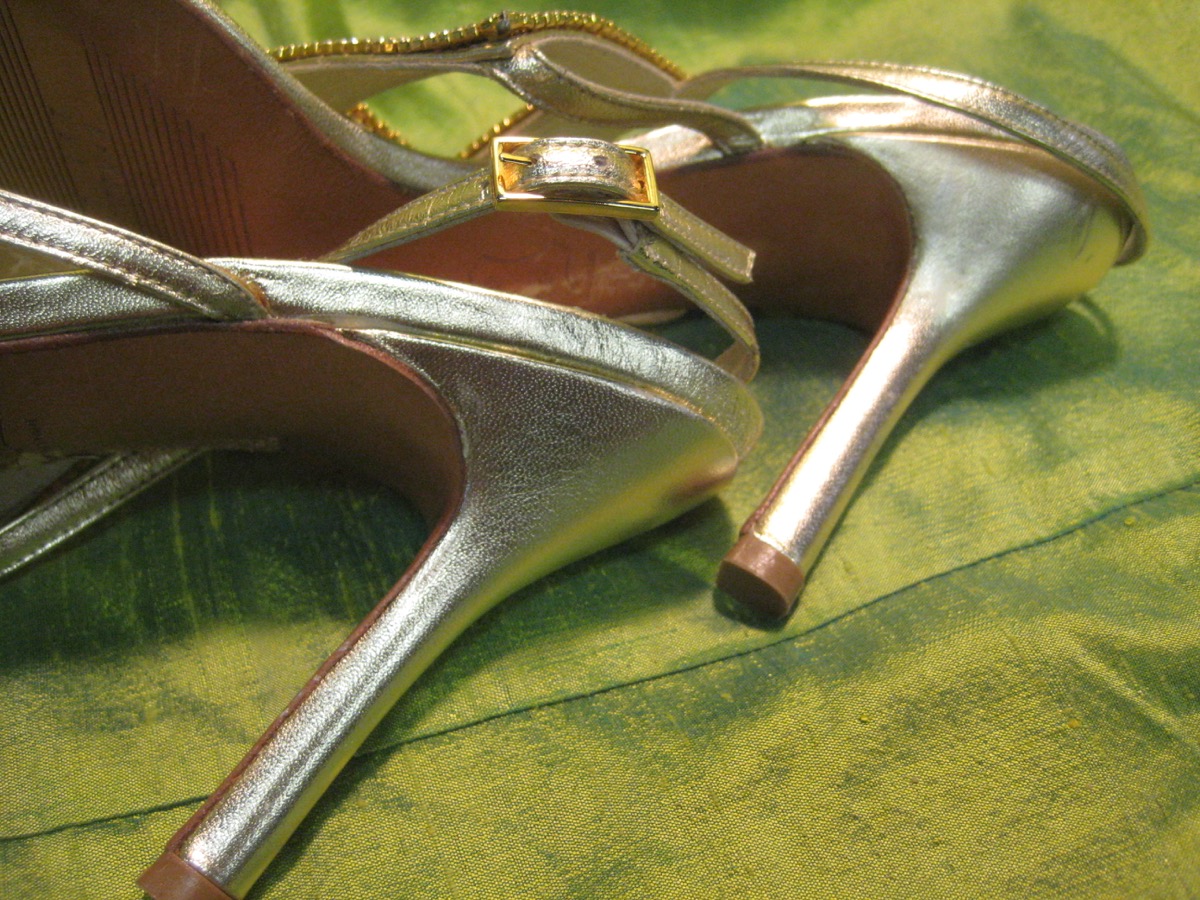
All that glittered and shined took over the late '90s. One of the most popular examples was John Fluevog's Munster-esque design, which Madonna famously wore during the decade.
1999: Manolo Blahniks
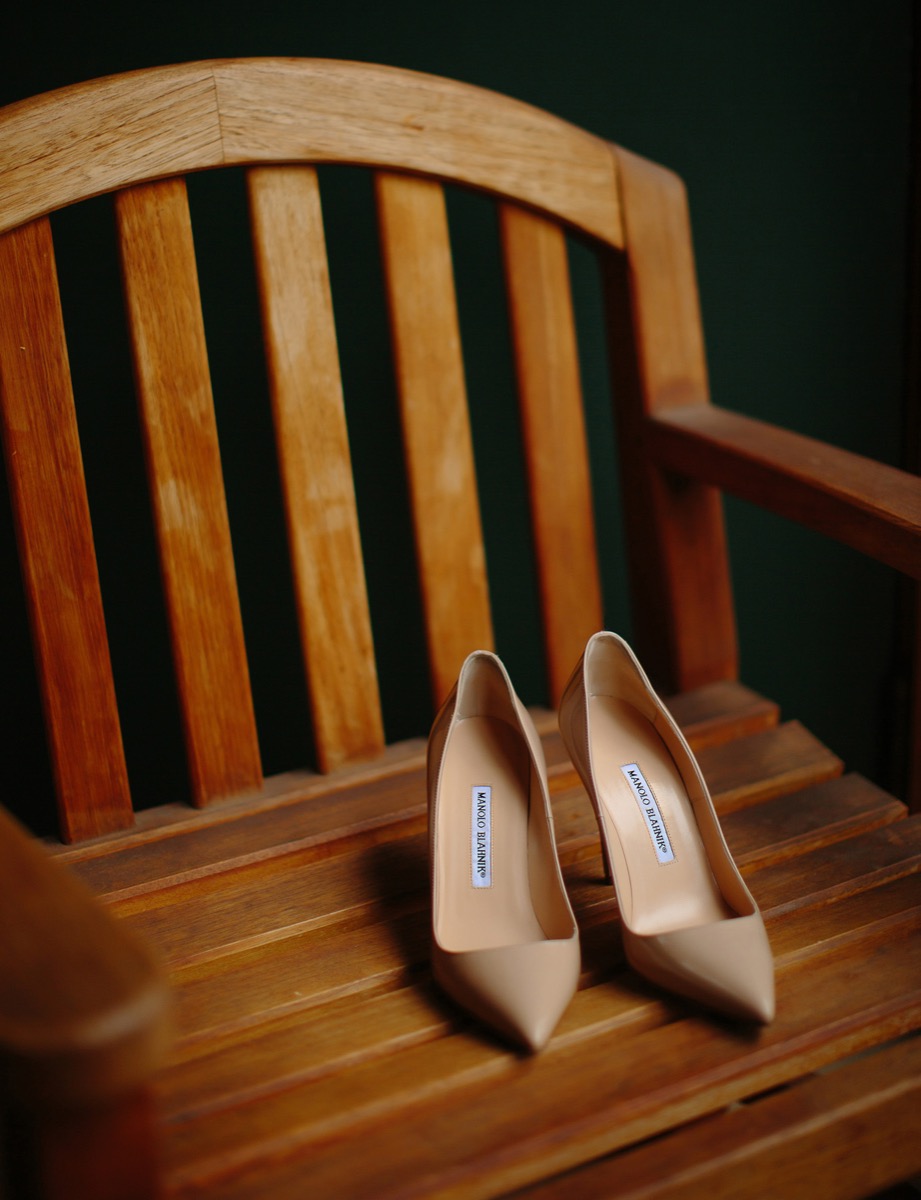
When Sex and the City premiered in 1999, it revolutionized women's fashion, and particularly footwear. Carrie Bradshaw, played by Sarah Jessica Parker, adored Manolo Blahniks, and suddenly, they were the "it" shoe.
By 2000, Neiman Marcus alone was selling 30,000 pairs a year, according to The New Yorker. Considering the price started at $500, that's certainly nothing to scoff at. And for more fashion from the past, check out The Definition of "Stylish" the Year You Were Born.
To discover more amazing secrets about living your best life, click here to follow us on Instagram!

